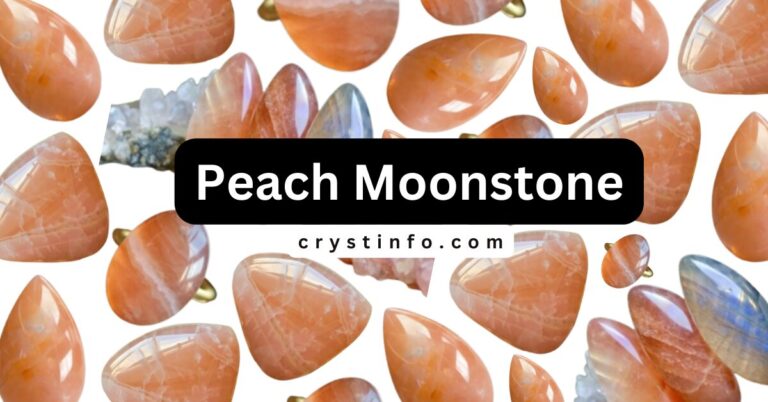White Crystals: Explore Meaning, Types & Healing Properties [Guide]
What are White Crystals?
Throughout my life, sparkling jewels and brilliant white crystals have entered my life, converting my surroundings into places of great aesthetic beauty as well as profound healing.
- Beyond Ornamental Sparkle:
- Crystals offer more than just a captivating sparkle.
- Their beauty goes beyond ornamentation to encompass deeper energy and meaning.
- Deep Energy and Healing Qualities:
- Crystals possess deep energy with healing qualities.
- Their vibrations contribute to holistic well-being and spiritual balance.
- More Than Just Jewelry:
- Crystals transcend being mere jewelry.
- They serve as strong allies in the pursuit of harmony and positivity.
- Aura Healers:
- Crystals function as aura healers, influencing the energy field around individuals.
- Their presence contributes to a positive and balanced aura.
- Chakra Cleansers:
- Crystals act as chakra cleansers, influencing and balancing the body’s energy centers.
- Their properties contribute to overall chakra alignment and well-being.
- Holistic Support in Pursuit of Harmony:
- Crystals provide holistic support in the pursuit of harmony and positivity.
- Their energy can positively impact emotional, mental, and spiritual aspects of one’s life.
- Strong Allies in Spiritual Journey:
- Crystals become strong allies in the spiritual journey.
- Their presence and energy enhance spiritual growth, mindfulness, and overall positive energy.
| Crystal | Properties and Benefits |
|---|---|
| Clear Quartz | Amplifies energy, enhances clarity, and spiritual growth. |
| Rose Quartz | Promotes love, compassion, and emotional healing. |
| Amethyst | Aids in relaxation, intuition, and spiritual awareness. |
| Citrine | Attracts abundance, prosperity, and boosts self-confidence. |
| Black Tourmaline | Repels negative energy, provides protection, and enhances grounding. |
| Selenite | Cleanses and purifies energy, promotes mental clarity, and spiritual connection. |
| Lapis Lazuli | Enhances communication, intuition, and encourages self-expression. |
| Tiger’s Eye | Brings balance, focus, and stability, fostering confidence and courage. |
| Amazonite | Eases stress, promotes emotional balance, and enhances creativity. |
| Hematite | Grounds and protects, boosts strength, and encourages a sense of stability. |
Zodiac sign associations and a wide range of colors make crystals a multifaceted medium for connecting with the gem that speaks to my dreams. There is a crystal just waiting to share its special brand of magic, whether I’m looking for boundless joy, nourishing self-love, or a sense of foundation. It’s an exploration voyage, a dance with the ethereal energies these brilliant friends offer me. These crystals are silent but powerful allies that fill my space with beauty, positivity, and the entrancing allure of their healing touch as I navigate the difficulties of academia.
Meaning Of White Crystals:
When we refer to someone as “white,” we don’t have to take it literally. Despite their apparent transparency, certain crystals, such as white sapphire, are included in the category of white crystals because of their clarity.
- Association with Sleep and Mental Energy:
- White gems are associated with sleep and mental energy, and they are governed by the Moon, symbolizing calmness and tranquility in the nighttime.
- Good Fortune and Security:
- White quartz crystals, including milky quartz and clear quartz, are believed to bring good fortune and offer security, especially after dark. They provide a sense of protection and stability in the darkness of night.
- Amplification of Vibrations:
- These crystals have the unique ability to amplify the vibrations of other crystals and stones. They enhance the energy of surrounding crystals, making them more potent and effective in their healing properties.
- Removal of Negative Energy:
- White quartz crystals are known for their ability to remove negative energy from their surroundings. They act as purifiers, cleansing the environment of any harmful or stagnant energy.
- Versatility in Replacement:
- Due to their encompassing nature, white stones like white quartz can be used to replace other stones of any color in crystal healing practices. They contain all hues within them, symbolizing unity and wholeness.
When it comes to Earth-based crystals, one stone can appear in multiple ray energies, displaying a rainbow of colors. Consider sapphires, which come in various shades of orange, pink, yellow, purple, green, and blue. For ease of use, sapphires that become clear are frequently reduced to white.
- In the metaphysical realm, white ray energy is linked to healing, clarity, and pure light.
- White crystals are highly regarded as “master healers” due to their many healing properties.
- White crystals do not have a specific association with any particular chakra.
- White crystals often align with the crown chakra, serving as a convergence point for upward-pointing chakras.
- The crown chakra is considered the point of connection with higher states of consciousness.
- White light symbolizes our most advanced state, transcending earthly existence.
- White crystals are valued for their ability to bring about spiritual elevation and enlightenment.
- The healing properties of white crystals contribute to their reputation as powerful metaphysical tools.
- White crystals are associated with purity, spiritual growth, and a connection to higher realms.
- Embracing white ray energy can enhance one’s overall well-being and spiritual journey.
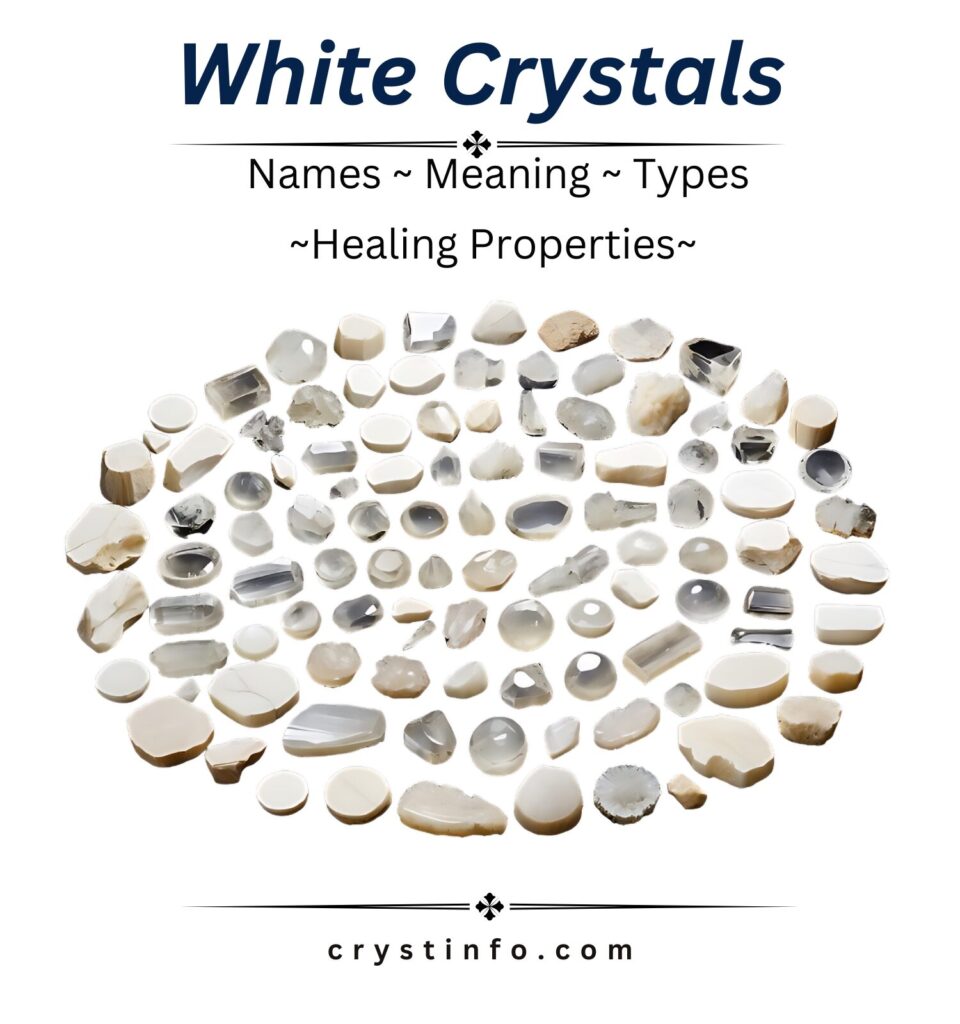
Interestingly, white crystals are influenced by the moon and have a strong bond with our dream and slumber states. In the dark, they take on the role of guardians, providing both concrete and abstract safety. White crystals are incredibly powerful all-around stones that can enhance the energies of other stones, which makes them priceless additions to any crystal collection. Certain white stones have the amazing ability to recharge and even clean other crystals by themselves.
| Property | Description |
|---|---|
| Color | White |
| Composition | Varies based on the specific mineral. Examples include quartz, calcite, selenite, and many others. |
| Crystal System | Varies based on the specific mineral. Examples include hexagonal (quartz), trigonal (calcite), monoclinic (selenite), etc. |
| Hardness | Varies based on the specific mineral. Examples range from 2 to 7 on the Mohs scale. |
| Luster | Varies based on the specific mineral. Examples include vitreous (quartz), pearly (selenite), and others. |
| Transparency | Varies from transparent to translucent to opaque. |
| Cleavage | Varies based on the specific mineral. Examples include perfect (calcite), none (quartz), and others. |
| Fracture | Varies, including conchoidal (quartz), fibrous (selenite), and others. |
| Specific Gravity | Varies based on the specific mineral. Examples range from 2.2 to 2.7 for quartz, around 2.7 for calcite, and others. |
| Streak | Varies based on the specific mineral. Examples include white (quartz), white (calcite), and others. |
| Occurrence | Found in various geological environments, including sedimentary rocks, igneous rocks, and metamorphic rocks. |
| Uses | – Gemstone Use: Some white crystals like quartz are cut and used in jewelry. |
| – Ornamental Use: Many white crystals are carved into decorative items. | |
| – Metaphysical Beliefs: Properties may vary; commonly associated with purity and clarity. |
Three of the best affirmations to use when working with White crystals are:
- Affirmation 1:
- “I am filled with pure and positive energy.”
- This affirmation emphasizes the infusion of positive and uplifting energy into one’s being, aligning with the purity and clarity associated with white crystals.
- “I am filled with pure and positive energy.”
- Affirmation 2:
- “I am open to receiving spiritual guidance and wisdom.”
- This affirmation expresses openness to receiving spiritual insights and wisdom, reflecting the receptive and intuitive qualities often associated with white crystals and their connection to higher consciousness.
- “I am open to receiving spiritual guidance and wisdom.”
- Affirmation 3:
- “A white light of protection and healing surrounds me.”
- This affirmation invokes a sense of protection and healing, visualizing a radiant white light enveloping and shielding oneself from negative influences while promoting a sense of calmness and well-being.
- “A white light of protection and healing surrounds me.”
White crystals, which stand for innocence and purity, are lights in the darkness, trying to bring light into the darkest circumstances. They improve meditative states and encourage a deeper connection to the metaphysical realm as tools for spiritual work. White gems show up as brilliant allies in my crystal explorations, bringing a hint of celestial magic to my voyage.
Benefits Of White Crystals:
White gemstones resemble tiny drops of mystical spiritual energy. Imagine the warm radiance or the pure, icy glow of these gems, echoing with ascension, clarity, and purity. They are more than simply attractive; they provide access to the spiritual world. The beauty of white gemstones can be compared to the hue of clouds, the flap of angel wings, or the peaceful descent of new snow.
Jewels as Expert Healers:
- White jewels are praised as expert healers in modern times.
- They are regarded as the superheroes of healing, possessing unique and powerful healing properties.
Amplifying Visions and Dreams:
- White jewels excel at amplifying the volume of our visions and dreams.
- They enhance our ability to visualize and manifest our aspirations.
Direct Line to Spirit Guides:
- These gems set up a direct line to our spirit guides.
- Facilitate communication with spiritual entities, offering guidance and insights.
Encouragement to be Receptive:
- White gems encourage individuals to be receptive to the whispers of the universe.
- Foster an openness to cosmic guidance and universal wisdom.
Reflecting Cosmic Swirl of Stars:
- White gems, with their reflective properties, symbolize the cosmic swirl of stars.
- Dance with a feminine energy, embodying the graceful and intuitive aspects of the universe.
Clarity of Purpose:
- White gems work alongside individuals to help clarify their purpose.
- Provide insights and guidance to align actions with a higher sense of purpose.
Incremental Progress Toward Best Selves:
- White gems support incremental progress toward becoming one’s best self.
- Their energy aids in personal growth and development over time.
Self-Brightening Journey:
- The journey with white crystals resembles a self-brightening experience.
- Individuals can explore and enhance their inner light and wisdom with the guidance of these gems.
Burst of Brightness to the World:
- White crystals offer a burst of brightness to the world.
- Their positive energy and healing properties can positively impact individuals and the environment.
| Aspect | Influence of White Gemstones |
|---|---|
| Physical Healing | White gemstones, with their purity and detoxifying energy, support the body in purging toxicity, reducing stress, anxiety, and enhancing the immune system. They contribute to restorative sleep. |
| Crown Chakra Healing | White crystals aid in crown chakra healing, facilitating a clear path of energy between earthly and cosmic forces. This connection allows for expanded consciousness, unity with the divine, and surrender to balance and trust. |
| Relationships | White gems promote clear-headed thinking, emotional balance, and a sense of innocence in relationships. They prevent getting bogged down in insignificant details, fostering spiritual bliss, universal love, and gentle acceptance. |
| Wealth | White crystals, associated with healing energy, work to calm the mind and attract abundance. They clear obstacles, encourage openness to receiving, and guide individuals to embrace the right opportunities with clarity and an open heart. |
Types Of White Crystals:
As we delve into the world of some stunning White Crystals that can genuinely lighten your load, get ready to add a little sparkle to your life. With their radiant light, calming healing melody, and feelings of universal love, these shimmering white stones are like tiny cosmic hugs.
We have the ideal essential gemstones just for you, whether you’re drawn to a stone full of feminine grace or searching for gems that balance your chakras and lead you with a deliberate gait. It all comes down to using your intuition and paying attention to that inner guidance system when selecting the perfect crystal. I promise you, the gem meant to adorn your world is the one that speaks to your heart. Now let’s explore some of healing White Crystals below…
1.Selenite:

A treasured gem since the days of Ancient Greece is selenite. With all due poetic justice, the Greeks gave it the name “moon,” referring to its heavenly appeal. It’s interesting to note that they created window frames out of Selenite, which lets gentle moonlight into poorly lit areas and pays creative homage to the essence of the crystal.
- Selenite treasures are predominantly sourced from caves in Madagascar, Morocco, and Mexico.
- The crystal structure of Selenite resembles tiny icicles, contributing to its unique appearance.
- Selenite is not only aesthetically pleasing but also a powerful tool against negative energies.
- It serves as a protector when strategically placed in public areas.
- When used in public spaces, Selenite clears and balances negative energy.
- Selenite promotes a sense of calm concentration among those who are in its presence.
- The crystals’ natural beauty adds to its appeal as a decorative and metaphysical element.
- Selenite’s ability to ward off negativity makes it a popular choice for energy cleansing.
- The caves of Madagascar, Morocco, and Mexico are known for producing high-quality Selenite.
- Selenite’s icicle-like crystal structure contributes to its distinctive and captivating look.
Selenite is a great meditation companion because, according to rumors, it can open channels to other universes. It promises to take you on a more profound journey that will deepen your meditation experience.
| Property | Description |
|---|---|
| Name | Selenite |
| Composition | Hydrated calcium sulfate (CaSO₄ · 2H₂O) |
| Color | Colorless or white |
| Crystal System | Monoclinic |
| Hardness | 2 on the Mohs scale |
| Luster | Pearly |
| Transparency | Transparent to translucent |
| Cleavage | Perfect in one direction, basal |
| Fracture | Fibrous |
| Specific Gravity | 2.31 |
| Streak | White |
| Occurrence | Often found in evaporite deposits, clay beds, and around hot springs. Major sources include Mexico, Morocco, and the United States. |
| Uses | – Ornamental Use: Carved into decorative items, often in the form of wands, spheres, and other shapes. |
| – Metaphysical Beliefs: Associated with promoting mental clarity, purification, and connection to higher realms. |
Hardness:
Gravity:
Here’s the gem’s most notable feature: its ability to clean itself. Yes, selenite looks after itself; it effortlessly rejects unwanted energies. By extending its cleansing abilities to other stones, it goes above and beyond. A substantial piece of selenite is used by some crystal enthusiasts to house their entire collection, guaranteeing a continuous cleansing while the gems are inactive.
Howlite:
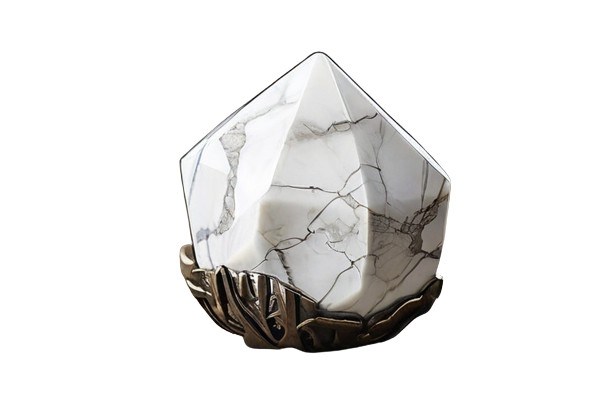
Beautiful white crystal called howlite is frequently used to make imitation turquoise. It takes on the fractured, patterned texture evocative of natural turquoise, much like the chameleon of the crystal world. Its white canvas lends itself well to dyeing experiments; among other variations, we get gorgeous Blue Howlite, and best of all, they all have similar healing properties.
- Howlite functions as a mental exercise, stimulating brain activity and memory.
- It ignites a sincere desire to learn and enhances cognitive processes.
- The gemstone serves as a mentor for patience, helping individuals relax during moments of impatience.
- Howlite influences communication skills by traversing the chakra highway.
- It encourages more emotionally expressive interactions with others.
- The gemstone raises awareness to a level that can significantly improve life.
- Howlite’s focus on communication contributes to more meaningful and open exchanges.
- It is especially beneficial for those seeking to enhance their communication abilities.
- Howlite’s impact on the chakras extends its influence throughout the mind and body.
- The gemstone’s multifaceted benefits make it a valuable addition to personal development practices.
The benefits in real life are as follows: Howlite has a talent for regulating your body’s calcium levels. Even if you’re getting your calcium fix, it could be difficult to absorb. Howlite steps in to help at that point.
| Property | Description |
|---|---|
| Name | Howlite |
| Composition | Calcium borosilicate hydroxide (Ca₂B₅SiO₉(OH)₅) |
| Color | Usually white or colorless, with occasional gray to black veins or markings. |
| Crystal System | Monoclinic |
| Hardness | 3.5 on the Mohs scale |
| Luster | Silky to vitreous |
| Transparency | Transparent to opaque |
| Cleavage | Perfect in one direction, prismatic |
| Fracture | Uneven |
| Specific Gravity | 2.53 – 2.59 |
| Streak | White |
| Occurrence | Typically found in borate deposits, often in association with other minerals. Major sources include the USA and Canada. |
| Uses | – Ornamental Use: Carved into beads, cabochons, and other decorative items. |
| – Imitation: Sometimes dyed blue to resemble turquoise. | |
| – Metaphysical Beliefs: Often used for its calming and soothing properties, believed to aid in reducing stress and insomnia. |
Hardness:
Gravity:
Howlite is a borosilicate mineral known for its white to colorless appearance and distinctive gray to black veins or markings. It is commonly used for ornamental purposes, and in metaphysical beliefs, Howlite is thought to have calming and soothing properties, aiding in stress reduction and promoting better sleep.
White Quartz:

White quartz, also referred to as milky quartz, is a gem that is essentially the super hero of ordinary quartz crystals. We must examine its origins if you’re interested in learning more about its meaning.
- Powerful Healing Energy:
- White quartz is recognized for its powerful healing energy.
- Possesses qualities that contribute to physical, emotional, and spiritual well-being.
- Support in Chaotic Life Moments:
- White quartz provides support when life becomes overwhelming with obligations and constraints.
- Acts as a stabilizing force in the midst of chaos, helping individuals stay composed.
- Composure and Coolness Amid Chaos:
- In challenging situations, white quartz keeps individuals composed and cool.
- Offers a sense of calmness and balance, akin to the demeanor of a Zen master.
- Life Mentor-Like Qualities:
- White quartz embodies life mentor-like qualities.
- Gently encourages individuals to navigate life’s challenges with grace and self-awareness.
- Encouragement to Acknowledge Personal Power:
- Acts as a kind life mentor, encouraging individuals to acknowledge their personal power.
- Inspires a recognition that one is the architect of their own reality.
- More Than Just a Crystal:
- White quartz transcends being just a crystal.
- Serves as a guide and mentor, imparting wisdom and insights beyond its physical form.
- Sage-Like Wisdom and Self-Awareness:
- White quartz is likened to a sage, bringing essential wisdom and self-awareness.
- Functions as a source of guidance and enlightenment in one’s personal journey.
Here’s a clever tip: If you keep a piece of white quartz with you, it can serve as a silent guide. Sensing the intensity of a momentous occasion? White quartz intervenes, forcing you to stop before saying or doing something terrible.
| Property | Description |
|---|---|
| Name | White Quartz |
| Composition | Silicon dioxide (SiO₂) |
| Color | White |
| Crystal System | Hexagonal |
| Hardness | 7 on the Mohs scale |
| Luster | Vitreous |
| Transparency | Transparent to translucent |
| Cleavage | None |
| Fracture | Conchoidal |
| Specific Gravity | 2.65 |
| Streak | White |
| Occurrence | Abundant worldwide, found in various types of rocks, especially igneous and metamorphic rocks. |
| Uses | – Gemstone Use: Cut and faceted for use in jewelry. |
| – Ornamental Use: Carved into decorative items, spheres, and other shapes. | |
| – Industrial Use: Widely used in the production of glass, ceramics, and concrete. | |
| – Metaphysical Beliefs: Associated with clarity, amplification of energy, and spiritual growth. |
Hardness:
Gravity:
When you practice zen, cradle white quartz in your palm and allow it to become your hidden doorway to a more profound level of inner wisdom. It’s not just soft; it’s like a soothing wind that lifts your positive energy to new heights.
White Amethyst:
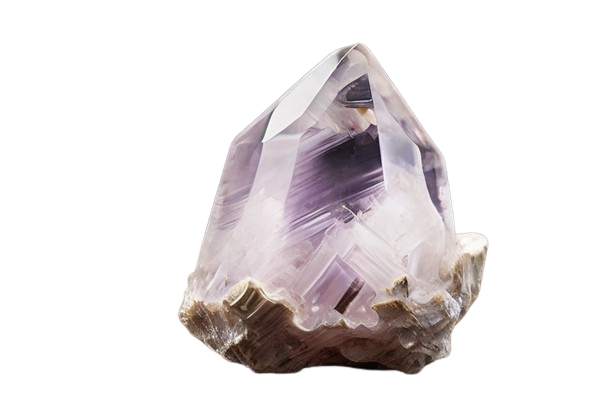
The one with the captivating blend of purple and white ray energy is amethyst. Imagine it as a cosmic dance of colors that gives off that recognizable, beloved mottled purple look.
- White Amethyst’s Transformation:
- When vivid purple crystalline structures are removed, white amethyst takes center stage.
- Undergoes a natural transformation, which can be expedited by exposure to sunlight or a small amount of heat.
- Color Transformation and Heavenly Feel:
- White amethyst’s color center undergoes a stirring transformation, giving it a cool, heavenly feel.
- The stone’s appearance changes, creating a unique and captivating aesthetic.
- Enhancement of Psychic Abilities:
- White amethyst is more than just a lovely face; it has the ability to enhance psychic abilities.
- Stimulates intuition and opens up psychic channels, allowing for a deeper connection to cosmic energies.
- Miraculous Concoction of Stress Relief:
- The stone creates a miraculous concoction of stress relief, tranquility, and mental clarity.
- When intuition goes into overdrive, it contributes to a serene and clear state of mind.
- Cosmic Therapist-Like Qualities:
- White amethyst is likened to having a cosmic therapist of your own.
- Enhances psychic abilities and contributes to mental well-being.
- Precautions for Psychic Channels:
- Great responsibility accompanies great psychic power.
- White amethyst opens up numerous psychic channels, requiring precautions against potential negative energy.
- Reliable Defender – White Quartz:
- White quartz serves as a reliable defender against negative energy.
- Acts as a protective shield for those exploring psychic abilities with white amethyst.
- Cleansing Between Performances:
- It is crucial to properly cleanse the white amethyst crystal between psychic performances.
- Ensures that the stone remains a clear and positive channel for intuitive and psychic experiences.
While there is no specific gemstone referred to as “White Amethyst,” amethyst itself is a variety of quartz typically known for its purple color. Amethyst crystals can naturally exhibit various shades of purple. If by “White Amethyst,” you are referring to a lighter or less saturated form of amethyst, here’s a general table:
| Property | Description |
|---|---|
| Name | Amethyst (Lighter or Less Saturated Form) |
| Composition | Silicon dioxide (SiO₂) with traces of iron and aluminum. |
| Color | Lighter or less saturated shades of purple, may appear more pastel or pale. |
| Crystal System | Hexagonal |
| Hardness | 7 on the Mohs scale |
| Luster | Vitreous |
| Transparency | Transparent to translucent |
| Cleavage | None |
| Fracture | Conchoidal |
| Specific Gravity | 2.65 |
| Streak | White |
| Occurrence | Found in various locations, often in geodes within volcanic rocks. Major sources include Brazil, Uruguay, and Zambia. |
| Uses | – Gemstone Use: Cut and faceted for use in jewelry. |
| – Ornamental Use: Carved into decorative items, beads, and other shapes. | |
| – Metaphysical Beliefs: Retains the general properties of amethyst, associated with spiritual growth, clarity, and protection. |
Hardness:
Gravity:
It’s important to note that the term “White Amethyst” may not be widely recognized as a distinct variety within the gemstone industry. If you have a specific type of quartz or amethyst in mind, providing more details would allow for a more accurate description.
White Topaz:
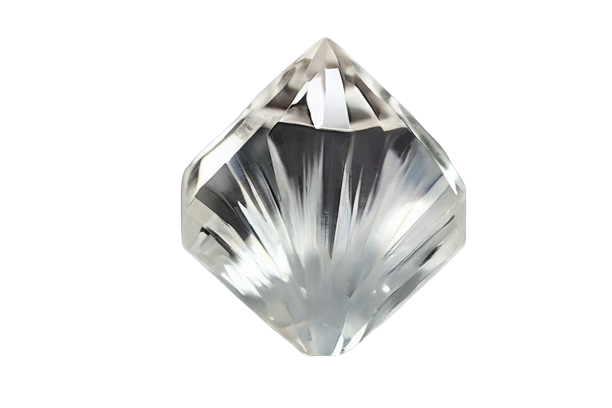
Despite its misleading name, white topaz is a gem class apart. Don’t be fooled by the “white”; transparency is key. When it’s cut and polished, imagine a polished version of a diamond; when it’s unpolished, it looks like cloudy quartz and exudes an air of effortless style.
- White topaz is an affordable and striking alternative to diamonds or sapphires.
- It serves as a cost-effective option in the world of gemstones.
- White topaz acts as a personal life coach, encouraging personal growth and self-discovery.
- It inspires individuals to learn more, discover greater meaning, and develop self-worth.
- The gemstone sparks inspiration and motivates individuals to level up in various aspects of life.
- White topaz is considered the stone of peace and love.
- It symbolizes hope and encourages individuals to radiate hope despite surrounding chaos.
- The gemstone’s emblematic representation includes a dove holding an olive branch.
- White topaz is a fantastic four in personal development, promoting peace and inspiration.
- Its affordability and meaningful symbolism make it a standout choice in the gemstone world.
Topaz is as durable as steel. There’s no need to be cautious around this crystal—it can withstand a blow without breaking. So go ahead and allow the topaz magic to lift your spirits.
| Property | Description |
|---|---|
| Name | White Topaz |
| Composition | Aluminum silicate fluoride (Al₂SiO₄(F,OH)₂) |
| Color | Typically colorless, but can exhibit various shades of white. |
| Crystal System | Orthorhombic |
| Hardness | 8 on the Mohs scale |
| Luster | Vitreous |
| Transparency | Transparent |
| Cleavage | Perfect in one direction |
| Fracture | Conchoidal |
| Specific Gravity | 3.6 |
| Streak | White |
| Occurrence | Found in various locations worldwide, often in granite and rhyolite. Major sources include Brazil, Russia, and the United States. |
| Uses | – Gemstone Use: Faceted for use in jewelry as a diamond alternative. |
| – Industrial Use: Occasionally used in scientific and optical applications. | |
| – Metaphysical Beliefs: Associated with clarity, focus, and spiritual development. |
Hardness:
Gravity:
White Topaz is a colorless or white gemstone that is often used as a less expensive alternative to diamonds in jewelry. It is known for its high hardness and brilliance. In metaphysical beliefs, White Topaz is associated with clarity, focus, and spiritual development. Specific details about White Topaz may vary, and consulting reputable sources is advisable for comprehensive information.
White Sapphire:

A transparent gem that dances to the beat of the white ray energy is white sapphire. You’re right if you think raw white sapphire looks like clear quartz. However, when purchasing this brilliant gem, make sure to stick with reliable sellers.
- White Sapphire as a Cosmic Mirror:
- White sapphire serves as a cosmic mirror reflecting one’s truest self.
- Reveals aspects that may be kept hidden from the public eye.
- Inner Mentor-Like Qualities:
- Similar to having an inner mentor, white sapphire provides clarity and intuition.
- Offers insights that can be elusive in the hustle of daily life.
- Constant Guardian Stone:
- White sapphire is considered a constant guardian stone over the sands of time.
- Acts as a cosmic bodyguard, providing a sense of protection and guidance.
- Cosmic Bodyguard Analogy:
- The analogy of a cosmic bodyguard suggests the protective and supportive nature of white sapphire.
- Implies a sense of security and assistance in life’s journey.
- Luck and Magical Potential:
- White sapphire was traditionally believed to bring luck and release magical potential.
- Used in meditation to tap into its mystical properties and enhance one’s fortunes.
- Meditation for Luck and Magic:
- Using white sapphire in meditation was thought to call forth luck and release its magical potential.
- The gem is seen as a tool for channeling positive energies and intentions during meditative practices.
- Channeling Energy in Meditation:
- Projecting intention during meditation is seen as a matter of channeling energy.
- White sapphire becomes a conduit for focused energy, enhancing the meditation experience.
The true gem, if you will pardon the pun, is that white sapphire is a kindness magnet. It subtly draws attention to and magnifies those kind deeds that are frequently overlooked. You’ll experience real benefits, I promise, and your daily existence will appreciate the invigorating energy this radiant crystal offers.
| Property | Description |
|---|---|
| Name | White Sapphire |
| Composition | Aluminum oxide (Al₂O₃) |
| Color | Typically colorless or white, but can exhibit various shades of white. |
| Crystal System | Hexagonal |
| Hardness | 9 on the Mohs scale |
| Luster | Vitreous |
| Transparency | Transparent |
| Cleavage | Indistinct |
| Fracture | Conchoidal |
| Specific Gravity | 4.03 |
| Streak | White |
| Occurrence | Found in various locations worldwide, often in igneous and metamorphic rocks. Major sources include Myanmar, Sri Lanka, and Madagascar. |
| Uses | – Gemstone Use: Highly valued in jewelry as a precious gemstone. |
| – Industrial Use: Occasionally used in scientific and optical applications. | |
| – Metaphysical Beliefs: Associated with clarity, wisdom, and spiritual enlightenment. |
Hardness:
Gravity;
White Sapphire is a colorless or white gemstone that belongs to the corundum family, like its colored counterpart, the blue sapphire. It is highly prized for its brilliance, hardness, and use in fine jewelry. In metaphysical beliefs, White Sapphire is associated with clarity, wisdom, and spiritual enlightenment. Specific details about White Sapphire may vary, and consulting reputable sources is advisable for comprehensive information.
White Cat’s Eye Moonstone:

White moonstone is another name for cat’s eye moonstone. Compared to its counterpart, the brilliant rainbow moonstone, it is much easier to spot.
- Distinct Direction of White Moonstone:
- White moonstone travels in a different direction than rainbow moonstone, which swirls the entire color spectrum within its white light.
- Graceful Refraction of White Light:
- White moonstone is named for its graceful refraction of a single white light stream down its center.
- The gem exhibits a unique and elegant play of light.
- Direct Route to Lunar Energy:
- White moonstone becomes more than just a pretty face; it serves as a direct route to absorbing lunar energy.
- Individuals can connect with the moon’s sensitivity, abundance, and nurturing energy through this gem.
- Flow of Lunar Energy into Aura:
- Sensitivity, abundance, and nurturing energy flow easily into the aura with the influence of white moonstone.
- The gem acts as a conduit for lunar energies, promoting a harmonious and balanced aura.
- New Paths to Purity and Hope:
- White moonstone opens new paths to purity and hope.
- Its influence gently opens the crown chakra, allowing individuals to connect with higher energies.
- Accessing Divine Feminine Energy:
- Moonstone helps individuals access their innate divine feminine energy.
- Promotes balance and stability in the energetic body.
- Equilibrium for a Stable Body:
- Moonstone’s equilibrium is necessary for maintaining a stable and energetic body.
- Its influence contributes to overall well-being and balance.
- Harmony Leading to Positive Outcomes:
- Maintaining harmony with moonstone in one area of life can lead to positive outcomes in other areas.
- The gem’s balancing effect creates a ripple of positive energy throughout various aspects of one’s life.
Oh, and get ready for an increase in psychic ability! Investing a lot of time in moonstone can enhance your psychic abilities because it has a balancing effect on the crown chakra.
| Property | Description |
|---|---|
| Name | White Cat’s Eye Moonstone |
| Composition | A type of feldspar, composed of orthoclase and albite, with a phenomenon known as adularescence. |
| Color | White or colorless with a distinct cat’s eye effect (adularescence). |
| Crystal System | Monoclinic |
| Hardness | 6 – 6.5 on the Mohs scale |
| Luster | Pearly |
| Transparency | Translucent |
| Cleavage | Perfect in two directions |
| Fracture | Uneven |
| Specific Gravity | 2.55 – 2.58 |
| Streak | White |
| Occurrence | Found in various locations worldwide, often in metamorphic rocks. Major sources include Sri Lanka, India, and Madagascar. |
| Uses | – Gemstone Use: Cut and polished for use in jewelry, particularly in cabochon shapes to highlight the cat’s eye effect. |
| – Ornamental Use: Carved into beads, cameos, and other decorative items. | |
| – Metaphysical Beliefs: Associated with intuition, feminine energy, and protection during travels. |
The stunning gemstone known as white cat’s eye moonstone is prized for its cat’s eye effect, or adularescence, which produces a luminous band that moves across the stone’s surface like a cat’s eye. It is frequently used in jewelry and, according to metaphysical beliefs, is connected to intuition, feminine energy, and protection when traveling. White Cat’s Eye Moonstone specifics can vary, so it’s best to check reliable sources for complete information.
White Opal:

A true eye-catcher for those venturing into the world of crystals is white opal. Admit it: Before exploring its magical powers, the majority of us are captivated by its aesthetic appeal.
- Cosmic Beam into Crown Chakra:
- White opal draws celestial light directly into the crown chakra, resembling a cosmic beam.
- Acts as an energy shower that clears all seven chakra centers.
- Easy-to-Use Energy Shower:
- White opal serves as an easy-to-use energy shower that requires minimal effort.
- Placing the crystal on top of the head allows its magic to work effortlessly.
- Mastery Over Crown Chakra:
- White opal’s mastery over the crown chakra enhances physical awareness.
- Offers an invitation to access other dimensions and expand consciousness.
- Gentle and Supportive Energy:
- White opal works gently and supportively, ensuring it doesn’t overwhelm the individual.
- Provides a positive experience without pushing one beyond their capacity.
- Relaxing Magic of White Opal:
- Simply laying back and placing white opal on the head allows the crystal’s magic to work without exertion.
- Offers a relaxing and rejuvenating experience.
- Variety of Hues:
- White opal crystals come in white, cream, or pale yellow hues.
- The variety of colors contributes to its aesthetic appeal.
- Reduction of Anxiety:
- White opal can aid in reducing anxiety.
- Encourages thoughts of serenity and clarity for a more tranquil mental state.
| Property | Description |
|---|---|
| Name | White Opal |
| Composition | Hydrated silica with varying amounts of water (SiO₂ · nH₂O) |
| Color | White or colorless with flashes of spectral colors (play-of-color). |
| Crystal System | Amorphous (no regular crystal structure) |
| Hardness | 5.5 – 6.5 on the Mohs scale |
| Luster | Subvitreous to waxy |
| Transparency | Transparent to translucent |
| Cleavage | None |
| Fracture | Conchoidal to uneven |
| Specific Gravity | 1.98 – 2.20 |
| Streak | White |
| Occurrence | Found in various locations worldwide, often in sedimentary rocks. Major sources include Australia, Ethiopia, and Mexico. |
| Uses | – Gemstone Use: Cut and polished for use in jewelry, often as cabochons to highlight play-of-color. |
| – Ornamental Use: Carved into decorative items and figurines. | |
| – Metaphysical Beliefs: Associated with inspiration, creativity, and emotional balance. |
White Opal is a type of opal known for its white or colorless appearance with flashes of spectral colors, known as play-of-color. It is used in jewelry, ornamental items, and is associated with metaphysical properties such as inspiration, creativity, and emotional balance. Specific details about White Opal may vary, and consulting reputable sources is advisable for comprehensive information.
White Scolecite:

White sclecite is a lucid crystal associated with meditation, subconscious communication, and the blissful realm of slumber. I promise you that this crystal adores dreamy content!
- Scolecite for Optimal Sleep Experience:
- Hold a piece of Scolecite close to your head during sleep for an optimal experience.
- It is likened to giving dreams VIP access to the subconscious party.
- Subconscious Party VIP Pass:
- Scolecite serves as a VIP pass for dreams to enter the subconscious realm.
- Enhances the quality of dreams and promotes a deeper connection with the subconscious mind.
- Energetic Wakefulness with Flat Piece:
- For energetic wakefulness, place a flat piece of Scolecite directly on the forehead.
- Align it with the third eye chakra for an enhanced experience.
- Tranquility and Peaceful Waves:
- Anticipate a wave of tranquility and peace when placing Scolecite on the forehead.
- The meditative vibes brought by Scolecite contribute to a serene and calm state of mind.
- Alignment with Third Eye Chakra:
- Aligning Scolecite with the third eye chakra enhances its effects.
- Promotes clarity of thought, intuition, and a heightened sense of awareness.
- Meditative Vibes for Tranquil State:
- Scolecite brings meditative vibes when placed on the forehead.
- Creates a meditative and peaceful atmosphere, promoting a sense of inner calm.
- Dual Purpose for Sleep and Wakefulness:
- Scolecite serves a dual purpose, optimizing both the sleep and wakefulness experiences.
- Enhances dream experiences during sleep and promotes tranquility and peace when awake.
This is a quick crystal grid trick: Your MVP is Scolecite. Place it squarely in the middle, allowing the crystal magic to enhance the abilities of its grid-wide crystal friends. It directs your vibrations in the proper direction, much like the captain of the crystal squad.
| Property | Description |
|---|---|
| Name | White Scolecite |
| Composition | Hydrated calcium aluminum silicate (CaAl₂Si₃O₁₀ · 3H₂O) |
| Color | White |
| Crystal System | Monoclinic |
| Hardness | 5 – 5.5 on the Mohs scale |
| Luster | Vitreous |
| Transparency | Transparent to translucent |
| Cleavage | Perfect in one direction, prismatic |
| Fracture | Uneven |
| Specific Gravity | 2.2 – 2.4 |
| Streak | White |
| Occurrence | Found in various locations worldwide, often in cavities within basaltic rocks. Major sources include India, Iceland, and Brazil. |
| Uses | – Ornamental Use: Cut and polished into cabochons or carved into decorative items. |
| – Metaphysical Beliefs: Associated with spiritual transformation, inner peace, and relaxation. |
White Scolecite is a member of the zeolite mineral group and is known for its delicate and intricate crystal formations. It is often used for ornamental purposes and is associated with metaphysical properties such as spiritual transformation, inner peace, and relaxation. Specific details about White Scolecite may vary, and consulting reputable sources is advisable for comprehensive information.
White Sodalite:
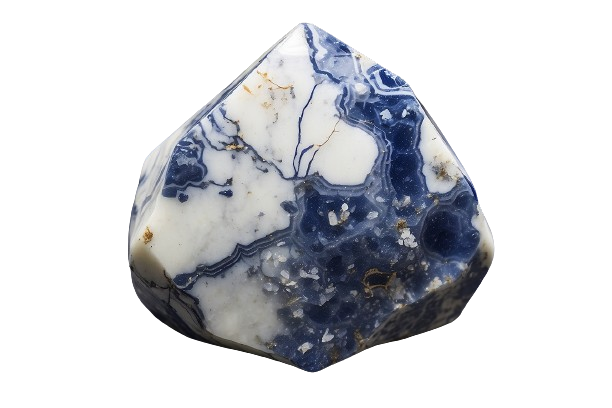
Sodalite going to delve into its white ray energy, so it’s not just about the blues. Prepare yourself for a sense of calm and order!
- Superhero Cape for Thoughts:
- Sodalite acts like a superhero cape for your thoughts when it shifts into the crown chakra.
- Enhances mental clarity and brings a sense of order to disorganized thinking.
- Saving Grace for a Disorganized Mind:
- White Sodalite can be a saving grace when the mind appears disorganized and scattered.
- Brings reason to the mix, revealing reality and utilizing intuition for guidance.
- Bringing Reason and Revealing Reality:
- White Sodalite brings reason to the thought process.
- Reveals the reality of situations and uses intuition to guide decision-making.
- Direction Towards Greatest Interests:
- The stone uses intuition to point individuals in the direction of their greatest interests.
- Acts as a guiding force in decision-making and life choices.
- Personal Advisor in Your Pocket:
- White Sodalite serves as a personal advisor in your pocket.
- Offers sensible advice and intuitive guidance for leaders and decision-makers.
- Secret Weapon – White Sodalite:
- White Sodalite is described as a secret weapon for mental clarity and guidance.
- Holding it near allows soothing energy and sensible charm to flow.
- Soothing Energy and Sensible Charm:
- White Sodalite emits soothing energy and sensible charm.
- Provides a calming influence on the mind and enhances overall well-being.
Here’s a little life tip: White sodalite soothes panic attacks like a balm. Put it around your neck to ward off any impending mayhem. Plus, you’ll be walking on air with more acceptance and self-worth.
| Property | Description |
|---|---|
| Name | White Sodalite |
| Composition | Sodium aluminum silicate chloride (Na₄Al₃(SiO₄)₃Cl) |
| Color | White with occasional veins or patches of blue. |
| Crystal System | Cubic |
| Hardness | 5.5 – 6 on the Mohs scale |
| Luster | Vitreous |
| Transparency | Translucent |
| Cleavage | Poor |
| Fracture | Uneven |
| Specific Gravity | 2.27 – 2.33 |
| Streak | White |
| Occurrence | Found in various locations worldwide, often in igneous rocks. Major sources include Canada, Russia, and Brazil. |
| Uses | – Ornamental Use: Carved into decorative items, beads, and cabochons. |
| – Metaphysical Beliefs: Associated with enhancing intuition, communication, and inner peace. |
White Sodalite is a variety of sodalite, known for its predominantly white color with occasional blue veins or patches. It is used for ornamental purposes, often carved into decorative items, beads, and cabochons. In metaphysical beliefs, White Sodalite is associated with enhancing intuition, communication, and inner peace. Specific details about White Sodalite may vary, and consulting reputable sources is advisable for comprehensive information.
Iceland Spar:
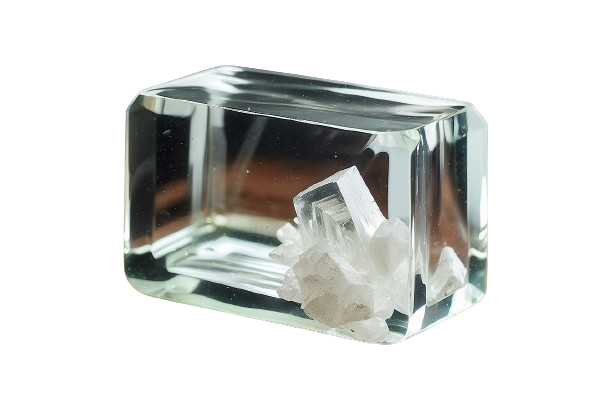
The Iceland Spar is a hidden gem that is comparable to quartz’s less well-known relative. Although they appear to be identical twins, can you actually obtain Iceland Spar? Well, in comparison to its more popular counterpart, that could be a bit of a treasure hunt. Reminder to self: to prevent confusion with crystals, only deal with reliable sellers.
- Mystical Sidekick for Manifestation:
- Iceland Spar serves as your mystical sidekick when venturing into the realm of manifestation.
- Supports and enhances the process of bringing desires into reality.
- Go-To Crystal for Setting Intentions:
- Iceland Spar is the go-to crystal for setting intentions and manifesting desires.
- Assists individuals in the challenging task of manifestation.
- Challenging Nature of Manifestation:
- Acknowledges that manifestation is not an easy task.
- Iceland Spar becomes a helpful aid for individuals navigating the complexities of manifestation.
- Grasping to Eliminate Obstinate Thoughts:
- Grasping Iceland Spar in your hand helps eliminate obstinate thoughts.
- Creates space for positive intentions and goals to unfold.
- Elimination of Obstacles:
- Iceland Spar works to eliminate stubborn or hindering thoughts.
- Clears mental obstacles, allowing for a smoother manifestation process.
- Making Room for Objectives to Unfold:
- Holding Iceland Spar allows for the elimination of obstacles, making room for objectives to unfold.
- Facilitates a more open and receptive mindset for the manifestation of goals.
Iceland Spar is your go-to partner for solving problems. This crystal intervenes when life presents you with puzzles that seem insurmountable, uncovering the source of the issue and providing the ideal fix. Since nothing is truly insurmountable in Iceland Spar’s eyes.
| Property | Description |
|---|---|
| Name | Iceland Spar |
| Composition | Calcium carbonate (CaCO₃) |
| Color | Colorless or white, transparent |
| Crystal System | Rhombohedral |
| Hardness | 3 on the Mohs scale |
| Luster | Vitreous |
| Transparency | Transparent |
| Cleavage | Perfect in three directions, rhombohedral |
| Fracture | Conchoidal |
| Specific Gravity | 2.71 |
| Streak | White |
| Occurrence | Found in various locations worldwide, often associated with sedimentary rocks and hydrothermal veins. Major sources include Iceland, Mexico, and the United States. |
| Uses | – Optical Use: Historically used in optical devices for its double-refraction properties. |
| – Ornamental Use: Carved into decorative items and used in crystal healing practices. | |
| – Metaphysical Beliefs: Associated with clarity, focus, and balancing energy. |
Iceland Spar, also known as calcite, is a transparent form of calcium carbonate with unique optical properties, including double-refraction. It has been historically used in optics and is also appreciated for ornamental and metaphysical purposes. Specific details about Iceland Spar may vary, and consulting reputable sources is advisable for comprehensive information.
Okenite:
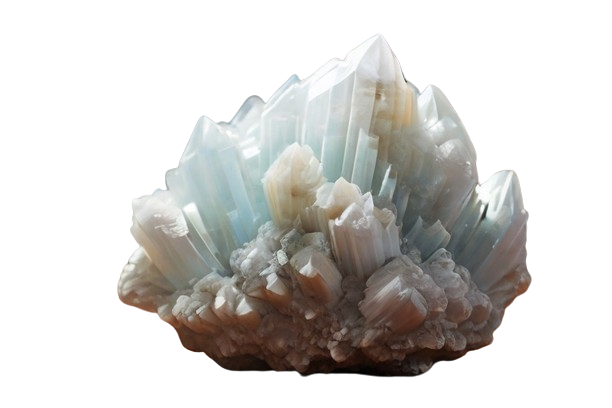
Okenite. I promise you, if you ever come across this unique opportunity, don’t let it pass you by. You know what? Okenite is the VIP of white stones. It’s about drawing prosperity in all its forms, not just about hoarding money.
- Purity Filter for Intentions:
- Okenite acts as a purity filter for your intentions.
- Facilitates a process of refining and clarifying intentions for manifestation.
- Eliminating Limiting Beliefs:
- Addresses the common issue of limiting beliefs hindering the manifestation of desires.
- Okenite works to eliminate these beliefs, creating a clean slate for intentions.
- Hope for Amazing Things:
- Okenite is effective when hoping for amazing things to happen.
- Acts as a catalyst for removing barriers and obstacles to manifesting positive outcomes.
- Clearing the Slate:
- Okenite cleans the slate, ensuring nothing but sincere and open intentions remain.
- Creates a space for unfiltered, honest aspirations and goals.
- Sincere and Open Intentions:
- The role of Okenite is to allow nothing more than sincere and open intentions.
- Encourages individuals to express their true desires without inhibitions.
- Emphasis on Truth:
- Okenite places emphasis on truth in setting intentions.
- Promotes authenticity and honesty in the manifestation process.
The main goals of Okenite are intelligence and unity. Imagine basing your life’s work on intelligence and camaraderie. Isn’t that the dream? You can never stop thriving in your physical experience when these two formidable individuals are by your side.
| Property | Description |
|---|---|
| Name | Okenite |
| Composition | Hydrated calcium silicate (CaSi₂O₅ · 2H₂O) |
| Color | White, colorless, or pale yellow |
| Crystal System | Orthorhombic |
| Hardness | 4.5 on the Mohs scale |
| Luster | Pearly |
| Transparency | Transparent to translucent |
| Cleavage | Perfect in one direction, prismatic |
| Fracture | Uneven |
| Specific Gravity | 2.28 |
| Streak | White |
| Occurrence | Found in basalt cavities, often in association with other minerals. Major sources include India, Italy, and the United States. |
| Uses | – Ornamental Use: Collected for its delicate and needle-like crystal formations, often in vugs or on matrix. |
| – Metaphysical Beliefs: Associated with spiritual growth, opening channels for communication with higher realms. |
Okenite is a relatively rare mineral known for its delicate and needle-like crystal formations. It is often collected for ornamental purposes and is associated with metaphysical properties such as spiritual growth and communication with higher realms. Specific details about Okenite may vary, and consulting reputable sources is advisable for comprehensive information.
Agate:

Agate. Consider agate as this hip, microcrystalline friend of Quartz that enjoys showing off its translucent, somewhat milky appearance. Geology enthusiasts, prepare for a fascinating fact: agate prefers to form comfortable niches inside metamorphic or volcanic rocks.
- Natural Crystal Hideouts:
- Agate is considered the natural world’s method of producing crystal hideouts.
- Forms unique and intricate patterns, resembling hideouts in the crystal world.
- Mainstay of Ornamental Applications:
- Agate has long been a mainstay in ornamental applications.
- Valued for its aesthetic appeal and versatility in various artistic forms.
- Multifaceted Charm:
- Agate blesses us with its multifaceted charm.
- Exhibits a wide range of colors, patterns, and formations, adding to its allure.
- Exquisite Jewelry:
- Agate is commonly used in the creation of exquisite jewelry.
- Its beauty and durability make it a popular choice for wearable art.
- Intricate Carvings:
- Agate is featured in intricate carvings.
- Artisans carve detailed designs and patterns into agate, showcasing its artistic potential.
- Versatile Appearance:
- Agate’s versatile appearance allows it to be used in various creative expressions.
- Its unique patterns and colors make it a favorite for both artists and collectors.
Think white, grey, brown, and, if you’re lucky, an uncommon appearance in green and blue. Agate comes in a wide variety of colors. What’s the secret to this vibrant production? minuscule crystals of minerals such as iron and manganese oxide, contributing to the color of agate.
| Property | Description |
|---|---|
| Name | Agate |
| Composition | Microcrystalline variety of quartz (SiO₂) |
| Color | Varied; can include bands, swirls, or patterns of different colors. Common colors include white, gray, blue, green, red, and brown. |
| Crystal System | Hexagonal |
| Hardness | 6.5 – 7 on the Mohs scale |
| Luster | Waxy to vitreous |
| Transparency | Translucent to opaque |
| Cleavage | None |
| Fracture | Conchoidal to uneven |
| Specific Gravity | 2.58 – 2.64 |
| Streak | White |
| Occurrence | Found in various locations worldwide, often in volcanic rocks and as a secondary mineral in sedimentary rocks. Major sources include Brazil, India, and the United States. |
| Uses | – Gemstone Use: Cut and polished for use in jewelry, particularly as cabochons and beads. |
| – Ornamental Use: Carved into decorative items, bookends, and bowls. | |
| – Metaphysical Beliefs: Associated with balance, harmony, and protection. Different types of agate may have specific metaphysical properties. |
Agate is a widely appreciated gemstone known for its variety of colors and distinctive banding patterns. It is used in jewelry, ornamental items, and is believed to have metaphysical properties promoting balance, harmony, and protection. Different types of agate may have specific characteristics and metaphysical associations. Specific details about individual agates may vary, and consulting reputable sources is advisable for comprehensive information.
Pearl:
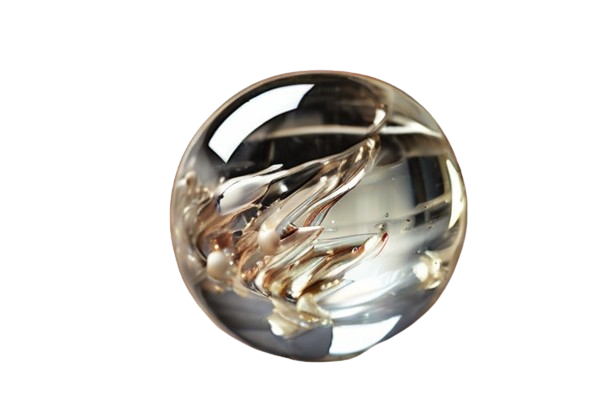
pearls. Imagine that pearls—tiny treasures grown within freshwater and saltwater mollusks—are those brilliant gems with an organic origin. Nature’s little factories that make jewelry, if you will.
- Pearl Luster – Reflective Quality:
- The pearl luster, or the surface’s reflective quality, is a key factor in what makes pearls unique.
- Finest pearls exhibit a radiant quality that almost makes them glow.
- Size Matters in Pearls:
- Size is a significant factor in determining the quality of pearls.
- Larger pearls are often considered more valuable, contributing to their uniqueness.
- Shapes of Pearls:
- The shape of pearls adds to their uniqueness.
- Pearls come in various shapes such as round, elongated, baroque, keshi, or button-shaped, each contributing a special touch.
- Individuality Through Overtones:
- Pearls showcase their individuality through overtones, adding additional hues to their appearance.
- Overtones like rose, ivory, champagne, and hints of green complement the primary color, with white taking center stage.
- Adventurous Pearl Colors:
- For those seeking adventure, pearls come in captivating peacock hues, as well as pink, peach, golden, and darker tones.
- Colors range from silver to copper, offering a diverse and vibrant palette beyond the traditional white.
- Diverse Color Palette:
- Pearls aren’t afraid to show off a diverse color palette.
- They can exhibit a range of colors, allowing individuals to choose pearls that suit their preferences and style.
Thus, the next time you are in awe of a pearl, keep in mind that it’s not just about its size or color—a variety of elements combine to create a singular gem that is genuinely one-of-a-kind.
| Property | Description |
|---|---|
| Name | Pearl |
| Composition | Calcium carbonate (mainly aragonite) and conchiolin (an organic protein) |
| Color | Varied; commonly white, cream, pink, blue, green, or black. May exhibit iridescence. |
| Crystal System | Amorphous (no regular crystal structure) |
| Hardness | 2.5 – 4.5 on the Mohs scale (lower than most gemstones) |
| Luster | Subvitreous to dull |
| Transparency | Opaque |
| Cleavage | None |
| Fracture | Irregular to conchoidal |
| Specific Gravity | 2.60 – 2.78 |
| Streak | White |
| Occurrence | Formed within the soft tissue of living shelled mollusks, primarily oysters and mussels, as a response to an irritant. Major sources include various oceans worldwide. |
| Uses | – Gemstone Use: Cultured pearls are widely used in jewelry, including necklaces, earrings, and bracelets. |
| – Ornamental Use: Used in embellishments for clothing and accessories. | |
| – Cultural Significance: Symbolizes purity, innocence, and beauty in various cultures. |
Pearls are unique gemstones formed within the soft tissue of mollusks, primarily oysters and mussels, as a result of the mollusk’s response to an irritant. They are widely used in jewelry and have cultural significance, symbolizing purity and beauty. Specific details about pearls may vary, and consulting reputable sources is advisable for comprehensive information.
Grandidierite:
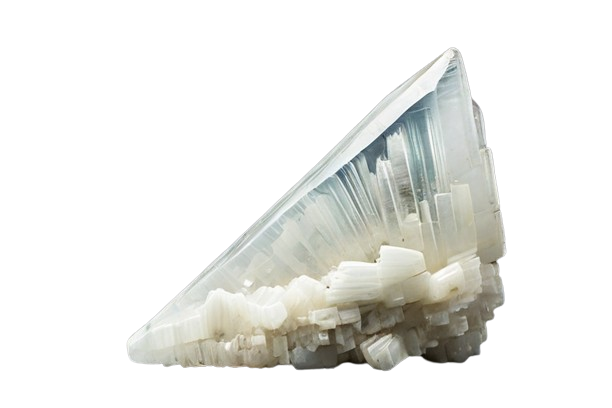
magnificently designed. With its incredible blue-green hues that evoke the desire to explore a lush forest or dive into the ocean, this mineral resembles the unicorn of minerals.
- Grandidierite Composition:
- Grandidierite combines aluminum, magnesium, and a trace of iron in its composition.
- Dynamic Color Display:
- More than a one-color marvel, grandidierite plays with light and displays various colors depending on the viewing angle.
- Possesses a dramatic flair with its dynamic color-changing properties.
- Rarity in Gemstones:
- Grandidierite rapidly establishes itself as one of the world’s rarest gemstones.
- Gains recognition and prominence in the world of precious minerals.
- See-Through to Semi-See-Through Vibe:
- Grandidierite dazzles with a vivid spectrum, alternating between emerald green and sea blue.
- Exhibits a see-through to semi-see-through vibe, adding to its allure.
- Diverse Color Palette Warning:
- Not every grandidierite is made equally, and individuals may prefer less striking colors like white or grey.
- Regardless of the color preference, grandidierite is still considered valuable and stylish.
- Cool Kids of Gemstones:
- Grandidierite is likened to the “cool kids” of gemstones.
- Its unique color-changing abilities and rarity contribute to its cool and coveted status.
Thus, keep in mind that the next time you come across this brilliant gem, it’s more than just a rock—rather, it’s a work of art created by Earth, displaying the most captivating colors.
| Property | Description |
|---|---|
| Name | Grandidierite |
| Composition | (Mg,Fe²⁺)Al₃(BO₃)(SiO₄)O₂ |
| Color | Typically blue-green to greenish-blue; may occasionally exhibit white or colorless specimens. |
| Crystal System | Orthorhombic |
| Hardness | 7.5 – 8 on the Mohs scale |
| Luster | Vitreous |
| Transparency | Transparent to translucent |
| Cleavage | Poor |
| Fracture | Conchoidal to uneven |
| Specific Gravity | 2.92 – 3.00 |
| Streak | White |
| Occurrence | Found in Madagascar, where it was first discovered, as well as other locations with metamorphic rocks. |
| Uses | – Gemstone Use: Cut and polished for collectors and may be used in jewelry. |
| – Ornamental Use: Displayed in mineral collections and museums. | |
| – Metaphysical Beliefs: Associated with harmony, transformation, and spiritual growth. |
Please note that instances of white or colorless Grandidierite are not as common, and the mineral is more widely recognized for its blue-green hues. Specific details about individual specimens may vary, and consulting reputable sources is advisable for comprehensive information.
Rainbow Moonstone:
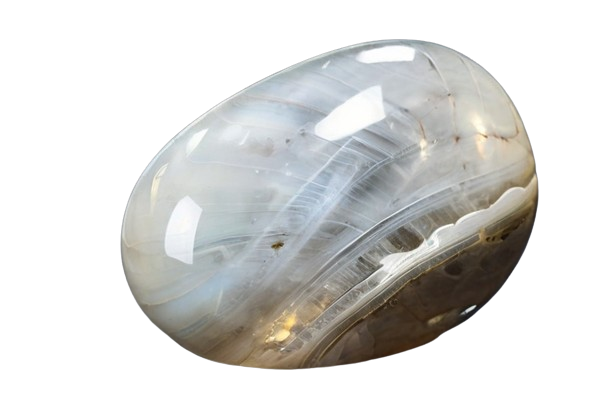
Moonstone resembles holding a tiny bit of the sky in your hands. Imagine, then, a particular kind of orthoclase that displays adularescence, a dreamy, pearly shimmer. It’s similar to seeing a rainbow appear in the clouds—you know, that ethereal, mystical burst of color that causes you to pause and gaze.
- Almost Translucent Feel:
- Rainbow Moonstone has an almost translucent feel, adding to its mystique.
- Holding a piece of this crystal gives a sense of having a secret source of enchantment.
- Ethereal Touch:
- The crystal imparts an ethereal touch, enhancing its magical and otherworldly appeal.
- Its translucency contributes to the mystical experience when held.
- Fortunate Origin Locations:
- Rainbow Moonstone astonishes the world in fortunate places like India and Sri Lanka.
- These regions showcase the crystal’s natural beauty, allowing it to captivate admirers.
- Beauty Display in Cabochons:
- Rainbow Moonstone is typically cut into cabochons, which are round, smooth shapes.
- The cabochon cut accentuates the crystal’s optical magic and showcases its iridescence.
- Accentuating Optical Magic:
- The cabochon cut enhances the optical magic inherent in Rainbow Moonstone.
- Highlights the play of colors and the iridescent sheen characteristic of this gem.
- Revelation of Beauty:
- Rainbow Moonstone doesn’t hesitate to show off its beauty in its chosen locations.
- Its revelation of beauty in the form of cabochons enhances its aesthetic appeal.
It’s kind of like getting a front-row seat to a stylish, retro black-and-white film, only with a twist. The gem primarily has a white or colorless appearance, but wait—there’s a noticeable blue undertone that steals the show. This particular crystal infuses your collection with a sense of celestial wonder and inspires belief in magic.
| Property | Description |
|---|---|
| Name | Rainbow Moonstone |
| Composition | Feldspar, typically a variety of orthoclase or albite with adularescence. |
| Color | White or colorless with a distinctive blue adularescent sheen. May exhibit flashes of other colors. |
| Crystal System | Monoclinic |
| Hardness | 6 – 6.5 on the Mohs scale |
| Luster | Pearly |
| Transparency | Translucent |
| Cleavage | Perfect in two directions, prismatic |
| Fracture | Conchoidal |
| Specific Gravity | 2.55 – 2.58 |
| Streak | White |
| Occurrence | Found in various locations worldwide, often in metamorphic rocks. Major sources include India, Sri Lanka, and Madagascar. |
| Uses | – Gemstone Use: Cut and polished for use in jewelry, particularly in cabochon cuts to highlight adularescence. |
| – Ornamental Use: Carved into decorative items and beads. | |
| – Metaphysical Beliefs: Associated with intuition, balance, and enhancing feminine energies. |
Rainbow Moonstone is a type of feldspar known for its beautiful adularescent sheen, often displaying a blue glow that moves across the surface when the stone is viewed from different angles. It is commonly used in jewelry and is associated with metaphysical properties promoting intuition and balance. Specific details about Rainbow Moonstone may vary, and consulting reputable sources is advisable for comprehensive information.
Dendritic Opal:
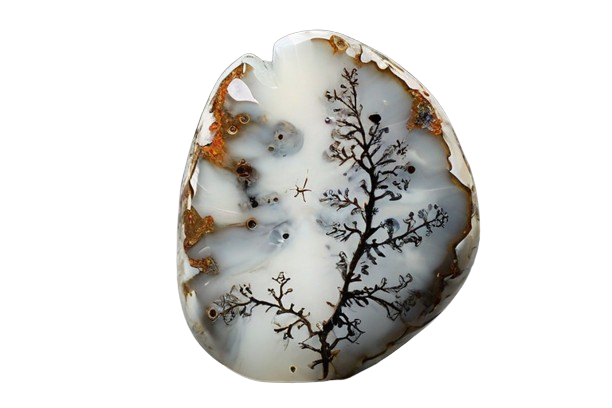
Dendritic Opal is also known as Psilomelane or Merlinite, according to some hipsters. This opal exhibits these exquisite tree-like patterns that evoke the feeling of strolling through a mysterious forest, much like a canvas painted with nature’s own brush.
- Fern-Like Patterns in Opal:
- The fern-like patterns in opal are the result of mineral oxides creating intricate designs.
- These patterns are like little stories embedded in the opal.
- Transparency in Opal:
- Opals, especially those with fern-like patterns, are found in dark colors like black or grey.
- The transparency in these colors allows the botanical works of art to shine.
- Personal Piece of Nature’s Art Gallery:
- Holding an opal with fern-like patterns feels like having a tiny, personal piece of nature’s art gallery.
- The patterns evoke a sense of nature’s beauty encapsulated in the gem.
- Best Display in Cabochons:
- Cabochons, with their round and smooth shapes, are the best way to display the beauty of opals.
- They accentuate the captivating patterns and draw attention to the color contrast.
- Wearable Art:
- Opals with fern-like patterns, showcased in cabochons, become wearable art.
- Wearing such opals allows individuals to carry a piece of nature’s beauty with them.
Consider a blank, white canvas as your foundation. Once you incorporate those alluring patterns in black or brown, you will have created a work of art. Dendritic Opal can be thought of as nature’s way of expressing, “See my artistic side!”
| Property | Description |
|---|---|
| Name | Dendritic Opal |
| Composition | Hydrated silica with inclusions of dendritic (tree-like) formations, often manganese or iron oxides. |
| Color | White or colorless base with black or brown dendritic inclusions. |
| Crystal System | Amorphous (no regular crystal structure) |
| Hardness | 5.5 – 6.5 on the Mohs scale |
| Luster | Waxy to dull |
| Transparency | Translucent to opaque |
| Cleavage | None |
| Fracture | Conchoidal to uneven |
| Specific Gravity | 2.10 – 2.30 |
| Streak | White |
| Occurrence | Found in various locations worldwide, often associated with volcanic rocks and as a secondary mineral in sedimentary rocks. |
| Uses | – Gemstone Use: Cut and polished for use in jewelry, particularly in cabochon cuts. |
| – Ornamental Use: Carved into decorative items and beads. | |
| – Metaphysical Beliefs: Associated with calming energy, connection with nature, and personal growth. |
Dendritic Opal is a variety of opal known for its distinctive dendritic inclusions, which resemble tree-like or fern-like patterns. It is used in jewelry and ornamental items and is associated with metaphysical properties promoting calming energy and a connection with nature. Specific details about Dendritic Opal may vary, and consulting reputable sources is advisable for comprehensive information.
Albite:
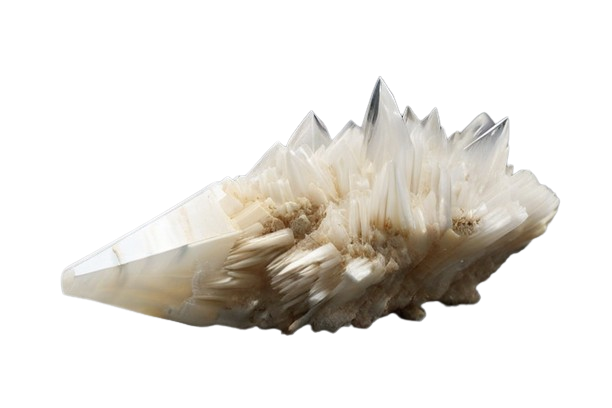
One of the true stars of the mineral world is albite. Albite, then, belonging to the feldspar group, is the unsung hero of igneous rocks; it can be found in the trendiest places, such as granite and diorite. Its name derives from the Latin word “albus,” which evokes strong feelings of whiteness.
- Vitreous to Pearly Luster:
- Albite possesses a vitreous to pearly luster, adding a glamorous touch to the geological scene.
- Its luster contributes to its aesthetic appeal, making it stand out in various formations.
- MVP in Ceramics and Glass Industries:
- Albite is a true MVP in the ceramics and glass industries, bringing its A-game to these applications.
- Valued for its properties, it plays a crucial role in the production of ceramics and glass.
- Star of Low-Temperature Formations:
- Albite shines as the star of low-temperature formations.
- Its presence is notable in geological formations that occur under specific temperature conditions.
- Variations in Color:
- Albite is more than just typical white; it occasionally adds a hint of gray or appears mysteriously colorless.
- Unicorn variations surprise with colors like yellow, pink, green, and even black.
- Stylish Mineral:
- Albite is considered a stylish mineral, showcasing a range of colors beyond the conventional white.
- Its diverse color palette and luster make it a distinctive and fashionable element in geological compositions.
It goes beyond a lovely face. Albite has a strong durability factor, scoring a 6-6.5 on the Mohs Hardness Scale.Albite is therefore here to rock your world of mineral knowledge, whether it’s lounging around in your favorite igneous rocks or showing off in the ceramics industry.
| Property | Description |
|---|---|
| Name | Albite |
| Composition | Sodium aluminum silicate (NaAlSi₃O₈) |
| Color | Typically white, colorless, or light shades of pink, green, or blue. |
| Crystal System | Triclinic |
| Hardness | 6 – 6.5 on the Mohs scale |
| Luster | Vitreous |
| Transparency | Transparent to translucent |
| Cleavage | Perfect in one direction, basal |
| Fracture | Conchoidal to uneven |
| Specific Gravity | 2.62 – 2.66 |
| Streak | White |
| Occurrence | Found in various locations worldwide, often in granite and pegmatite formations. Major sources include Brazil, Afghanistan, and the United States. |
| Uses | – Gemstone Use: Cut and polished for collectors but not commonly used in jewelry due to its relatively low hardness. |
| – Industrial Use: Used in the manufacturing of ceramics, glass, and porcelain. | |
| – Metaphysical Beliefs: Associated with balance, clarity, and enhancing spiritual awareness. |
Albite is a common feldspar mineral that is a major component of many igneous rocks. While it is not typically used as a gemstone due to its lower hardness, it is valued in various industrial applications and is associated with metaphysical properties promoting balance and spiritual awareness. Specific details about Albite may vary, and consulting reputable sources is advisable for comprehensive information.
Anhydrite:
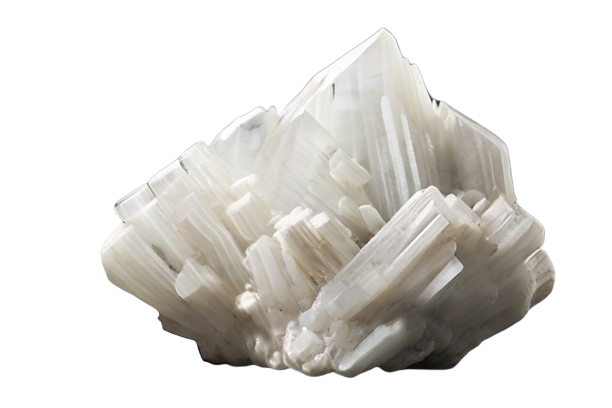
The calcium sulfate marvel of the sulfate mineral group is called anhydrite. Imagine this mineral as the unsung hero that works silently in sedimentary deposits, particularly in areas where water is scarce. Anhydrite prefers to congregate in evaporite environments to exhibit its calm, collected aura.
- Essential Component in Sulfuric Acid Production:
- Anhydrite is an essential component in sulfuric acid production, bringing its A-game to the world of chemistry.
- Plays a crucial role in industrial processes, contributing to the production of sulfuric acid.
- Significant Player in the Construction Industry:
- Anhydrite has a foot in the door of the construction industry, playing a significant role in various applications.
- Its properties make it an important player in construction projects.
- Key Element in Cement Production:
- Anhydrite is an important player in the cement game.
- Used in cement production, contributing to the formulation of construction materials.
- Versatility in Appearance:
- Anhydrite refuses to accept mediocrity in appearance.
- While it can look great in monochromatic or white settings, it adds flair with colors like blue, violet, pink, gray, or a hint of brown.
- Mineral Chameleon:
- Anhydrite acts like a mineral chameleon, adapting its color to fit different settings and moods.
- Exhibits versatility in appearance, making it suitable for a range of applications and aesthetic preferences.
- Adaptable to Various Color Schemes:
- Whether in monochromatic or vibrant settings, anhydrite is adaptable and can enhance its surroundings with a variety of colors.
- Offers aesthetic flexibility, making it a versatile choice in different contexts.
Hence, the next time you witness Anhydrite in operation, acknowledge its versatility as a mineral with many uses, ranging from industrial chemistry to geological formations.
| Property | Description |
|---|---|
| Name | Anhydrite |
| Composition | Calcium sulfate (CaSO₄) |
| Color | Colorless, white, or light shades of blue, pink, yellow, or gray. May also exhibit impurities that give it different colors. |
| Crystal System | Orthorhombic |
| Hardness | 3 – 3.5 on the Mohs scale |
| Luster | Vitreous to pearly |
| Transparency | Transparent to translucent |
| Cleavage | Perfect in three directions, prismatic |
| Fracture | Conchoidal to uneven |
| Specific Gravity | 2.9 – 3.2 |
| Streak | White |
| Occurrence | Found in various locations worldwide, often in sedimentary rocks and evaporite deposits. Major sources include Mexico, Germany, and the United States. |
| Uses | – Industrial Use: Primarily used in the production of gypsum, plaster, and fertilizers. |
| – Decorative Use: Occasionally used in carved decorative items. | |
| – Metaphysical Beliefs: Associated with calming energy, relaxation, and promoting a sense of balance. |
Anhydrite is a mineral composed of calcium sulfate and is commonly found in sedimentary rocks and evaporite deposits. While not commonly used as a gemstone, it has industrial applications and is associated with metaphysical properties promoting calmness and balance. Specific details about Anhydrite may vary, and consulting reputable sources is advisable for comprehensive information.
Onyx:

The cryptocrystalline quartz known for its ability to rock a wide range of colors is onyx. Today, we’re highlighting the sophisticated and classy White Onyx, a real gem among gems.
- Translucent, Milky-White Beauty:
- White Onyx is a translucent, milky-white beauty with a unique vitreous luster.
- Its appearance is characterized by a captivating and luminous quality.
- Favorite in Jewelry and Sculpture:
- Since ancient times, White Onyx has been a favorite in jewelry and sculpture.
- Its finely grained silica minerals contribute to its popularity in artistic applications.
- Strong 7 on the Mohs Scale:
- White Onyx scores a strong 7 on the Mohs scale, proving its durability and resilience.
- It is more than just a pretty face, showcasing practical strength.
- Artist in the Onyx Family:
- White Onyx is comparable to the artist in the onyx family.
- It displays versatility in its appearance and applications.
- Signature Styles in Black or Dark Brown:
- White Onyx looks good in traditional black or dark brown hues, which are its signature styles.
- These classic colors contribute to its timeless appeal.
- Dazzling in Various Colors:
- White Onyx can dazzle in various colors, including blue, yellow, red, green, and its show-stopper, white.
- Exhibits a varied wardrobe of colors, adding to its versatility and aesthetic range.
Thus, acknowledge White Onyx for its classic beauty combined with a hint of toughness the next time you see it gleaming in jewelry or enhancing a sculpture.
| Property | Description |
|---|---|
| Name | Onyx (White Onyx) |
| Composition | Variety of chalcedony, a type of microcrystalline quartz |
| Color | White, with occasional bands or streaks of other colors. Commonly used in its pure white form. |
| Crystal System | Hexagonal |
| Hardness | 6.5 – 7 on the Mohs scale |
| Luster | Vitreous |
| Transparency | Translucent to opaque |
| Cleavage | Absent |
| Fracture | Conchoidal to uneven |
| Specific Gravity | 2.58 – 2.64 |
| Streak | White |
| Occurrence | Found in various locations worldwide, often in association with other forms of chalcedony. Major sources include Brazil, India, and the United States. |
| Uses | – Ornamental Use: Carved into decorative items, beads, and jewelry. |
| – Architectural Use: Used for countertops, tiles, and other interior design applications. | |
| – Metaphysical Beliefs: Associated with promoting strength, focus, and protection. |
White Onyx is a variety of onyx, a type of chalcedony that is often prized for its banded appearance. In its pure white form, it is used for ornamental and architectural purposes, as well as in jewelry. It is associated with metaphysical properties promoting strength, focus, and protection. Specific details about White Onyx may vary, and consulting reputable sources is advisable for comprehensive information.
Ivory:
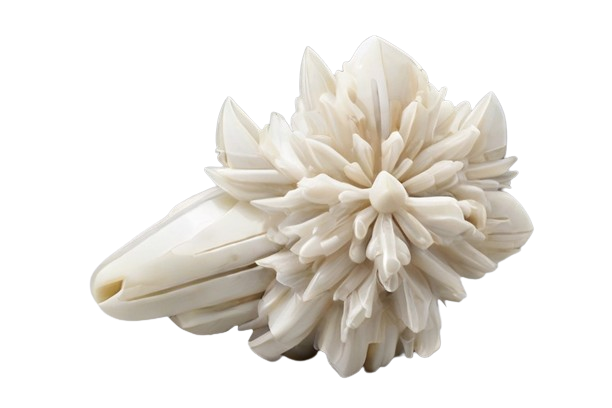
Ivory is a dense, hard, creamy-white substance with a fascinating past and a fair amount of controversy.Imagine this for a moment: ivory is real, genuine material that comes from the tusks and teeth of magnificent creatures like walruses, narwhals, and elephants. It has long been in high demand due to its artistic qualities and ability to be sculpted into beautiful ornaments, art pieces, and carvings.
- Historical Value of Ivory:
- Ivory was highly sought after in the past, valued for its historical significance.
- Appreciated for its fine craftsmanship, longevity, and silky feel.
- Changing Perspectives:
- Over time, perspectives on ivory have changed.
- Concerns about poaching, illegal trade, and impacts on threatened and endangered species have led to a shift in attitudes towards the ivory trade.
- Under Fire for Ethical Concerns:
- The ivory trade has been under fire multiple times due to ethical concerns.
- Discussions and debates have centered around issues of poaching and the impact on wildlife.
- Complicated Topic:
- The ivory trade is a complicated and multifaceted topic.
- It has generated extensive discussions regarding conservation, ethics, and the preservation of endangered species.
- Creamy White Color:
- Ivory is characterized by the goodness of creamy white.
- As it ages, ivory exhibits a range of colors, including creamy white, ivory, and occasional hints of brown or yellow.
It’s important to note that the trade and use of ivory from elephants is illegal in many countries due to conservation concerns and efforts to protect endangered species. Using and trading elephant ivory is prohibited by international agreements such as the Convention on International Trade in Endangered Species of Wild Fauna and Flora (CITES). The following table provides information for educational purposes only and should not be construed as endorsing or supporting the use of elephant ivory.
| Property | Description |
|---|---|
| Name | Ivory |
| Composition | Dentin, a dense bony tissue primarily from the tusks of elephants. May also refer to similar materials from walruses, hippopotamuses, and other animals. |
| Color | Off-white to yellowish or brownish, can darken with age. May exhibit natural patina. |
| Hardness | Varies depending on the type of ivory. Elephant ivory has a hardness of 2.5 on the Mohs scale. |
| Luster | Dull to slightly waxy |
| Transparency | Opaque |
| Cleavage | None |
| Fracture | Splintery |
| Specific Gravity | Varies depending on the type of ivory. Elephant ivory has a specific gravity around 1.8 – 1.9. |
| Uses | – Historical Use: Traditionally used for carving, sculpture, and art objects. |
| – Controversial Use: Due to conservation concerns, the use of elephant ivory is illegal in many countries. The trade is regulated by international agreements, and there are strict restrictions and bans in place. |
It is crucial to emphasize that the use of elephant ivory is illegal in many regions, and conservation efforts are in place to protect endangered species. The information provided here is for educational purposes only and does not endorse or encourage any illegal activities related to the trade or use of elephant ivory.
Satin Spar:
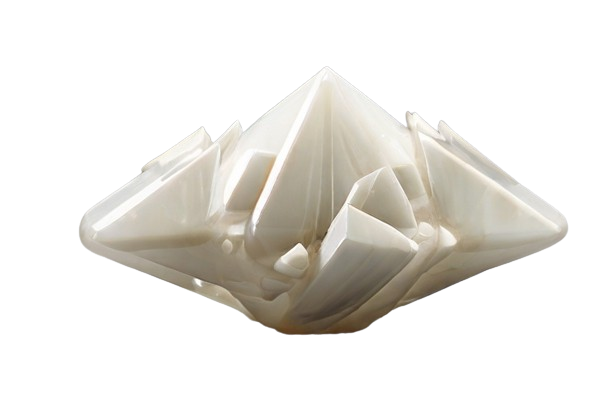
Atin Spar is a mineral that resembles the gypsum equivalent of a rock star. It has a sleek, fashionable appearance that evokes the feeling of satin. I’m Christina, and I’ll give you the lowdown.
- Glamorous Makeover of Gypsum:
- Satin Spar is Gypsum given a glamorous makeover, featuring a silky, fibrous appearance.
- It stands out and captures attention with its unique aesthetic.
- Mineral Composition:
- Satin Spar is a mineral, not just a rock, and its DNA contains calcium sulfate dihydrate.
- Its distinctive composition contributes to its mineral classification.
- Chatoyant Effect and Special Sauce:
- Satin Spar’s chatoyant effect comes from its special sauce, creating a play of light.
- The silky appearance and light play contribute to its name, reminiscent of satin.
- Selenite and Satin Spar:
- Selenite is gypsum in a crystalline form, not technically the same as Satin Spar.
- In casual conversation, the terms Selenite and Satin Spar are often used interchangeably, highlighting their close association.
- “Same, Same, but Different”:
- The mineral industry often refers to Selenite and Satin Spar with the phrase “same, same, but different.”
- Emphasizes their similarities and close relationship in casual discussions.
- Colors and Impurities:
- Satin Spar is typically a white canvas, but impurities occasionally introduce light hues.
- Nature adds a subtle enhancement, creating variations in color within the predominantly white mineral.
Satin Spar is a popular choice for decorative jazz. Consider decorative sculptures and carvings; they resemble Mother Nature’s own artistic creations.
| Property | Description |
|---|---|
| Name | Satin Spar (White) |
| Composition | Gypsum (hydrous calcium sulfate) |
| Color | White or colorless |
| Crystal System | Monoclinic |
| Hardness | 2 on the Mohs scale |
| Luster | Pearly to vitreous |
| Transparency | Translucent to opaque |
| Cleavage | Perfect in one direction, basal |
| Fracture | Fibrous |
| Specific Gravity | 2.31 |
| Streak | White |
| Occurrence | Found in sedimentary rock deposits and as a secondary mineral in evaporite deposits. Major sources include Mexico, the United States, and Spain. |
| Uses | – Ornamental Use: Carved into decorative items, often used for carving sculptures and small objects. |
| – Metaphysical Beliefs: Associated with calming energy and is believed to enhance spiritual and emotional well-being. |
Satin Spar is a fibrous variety of gypsum known for its silky luster and pearly to vitreous appearance. It is often used for ornamental purposes and is associated with metaphysical properties promoting calming energy and enhancing spiritual and emotional well-being. Specific details about Satin Spar may vary, and consulting reputable sources is advisable for comprehensive information.
Smithsonite:

One mineral that has the entire color spectrum under control is smithsonite. I’m Christina, your amiable college roommate, and I’m here to share some magic with minerals.
- Skilled Mineral Polisher:
- Smithsonite is not an average rock; it acts more like a skilled mineral polisher.
- Exhibits a shine that transitions from vitreous to pearly, attracting attention with its bling.
- Rarity and VIP in Zinc-Rich Areas:
- Smithsonite is not just any mineral; it’s a rarity found in areas rich in zinc.
- It hangs out like a VIP, showcasing its uniqueness in specific geological settings.
- Soothing Hues:
- Smithsonite is known for its soothing hues, adding to its visual appeal.
- The color variations contribute to its aesthetic charm.
- Mineral Chameleon:
- Aside from its soothing hues, Smithsonite resembles a mineral chameleon.
- It can adapt to various colors, showcasing versatility in its appearance.
- Jewelry and Cabochons:
- Smithsonite can be worn as jewelry or fashioned into cabochons.
- Offers options for personal adornment, allowing individuals to wear a piece of the planet’s own treasure.
Smithsonite is the Picasso of minerals, to use a metaphor. Imagine a color scheme that starts with white, moves through brown, deviates to orange, finishes with a pop of purple, feels green, and even touches on the chilly blues. Truly, it’s a rainbow of minerals, and who wouldn’t want a piece of that?Smithsonite, the mineral that’s more than just a pretty stone; it’s a jewelry star and a collector’s dream come true. Shine brightly, lovers of minerals.
| Property | Description |
|---|---|
| Name | Smithsonite |
| Composition | Zinc carbonate (ZnCO₃) |
| Color | White or colorless, but may also occur in shades of pink, green, blue, yellow, or brown due to impurities. |
| Crystal System | Trigonal |
| Hardness | 4.5 on the Mohs scale |
| Luster | Vitreous to pearly |
| Transparency | Transparent to translucent |
| Cleavage | Perfect in three directions, rhombohedral |
| Fracture | Uneven |
| Specific Gravity | 4.4 – 4.5 |
| Streak | White |
| Occurrence | Found in oxidized zinc ore deposits and as a secondary mineral in the weathering zone of zinc ore deposits. Major sources include Mexico, Namibia, and the United States. |
| Uses | – Gemstone Use: Rarely used as a gemstone due to its relative softness. |
| – Ornamental Use: Cut and polished for cabochons, beads, and carvings. | |
| – Industrial Use: Mined for its zinc content, which is an important industrial metal. | |
| – Metaphysical Beliefs: Associated with enhancing intuition and emotional healing. |
White Smithsonite is a variety of smithsonite, a mineral composed of zinc carbonate. It is valued for its varied colors and is used for ornamental purposes, including cabochons, beads, and carvings. It is also associated with metaphysical properties promoting intuition and emotional healing. Specific details about White Smithsonite may vary, and consulting reputable sources is advisable for comprehensive information.
Chalcedony:
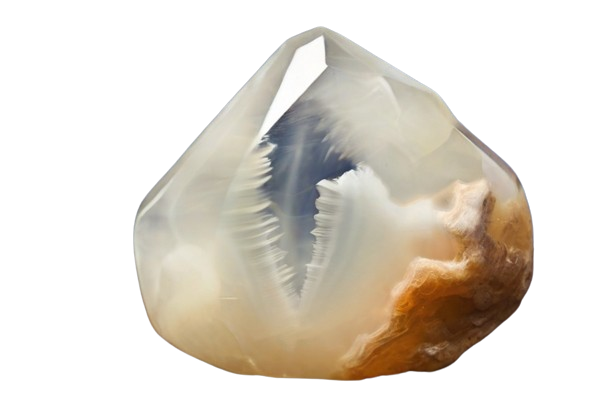
The cool kid among the quartz crew is chalcedony. I’m Christina, your go-to friend from college, and I can tell you why Chalcedony is so popular.
- Quartz’s Trendsetter:
- Chalcedony is essentially quartz’s trendsetter, leading the squad of A-listers like onyx, carnelian, and agate.
- It stands out as a prominent member of the quartz family.
- Leader of the Squad:
- Imagined as the leader of the squad, Chalcedony is surrounded by other notable minerals.
- It plays a central role among minerals like onyx, carnelian, and agate.
- Durable Rock Star with Glitzy Wax:
- Chalcedony is a durable rock star known for its durability, and it adds a touch of glitzy wax to its appearance.
- Often featured in jewelry and exquisite carvings, showcasing both strength and aesthetic appeal.
- Kaleidoscope of Colors:
- Chalcedony offers a kaleidoscope of colors, ranging from translucent grays to light blues, vibrant pinks, and milky whites.
- The color spectrum expands to include purples, yellows, browns, greens, oranges, and reds, creating an explosion of vibrant energy.
- Stealing the Show:
- Chalcedony steals the show with its diverse and captivating color palette.
- Its ability to exhibit a wide range of colors contributes to its visual allure.
For those who are interested in metaphysics, here’s some information: some people compare Chalcedony to a Zen master. It all comes down to encouraging serenity and improving your communication abilities.
| Property | Description |
|---|---|
| Name | Chalcedony (White Chalcedony) |
| Composition | Microcrystalline quartz, a form of silica (SiO₂) |
| Color | White or colorless, may also exhibit shades of gray, blue, pink, or brown. |
| Crystal System | Hexagonal |
| Hardness | 6.5 – 7 on the Mohs scale |
| Luster | Waxy to vitreous |
| Transparency | Translucent to opaque |
| Cleavage | Absent |
| Fracture | Conchoidal to uneven |
| Specific Gravity | 2.59 – 2.61 |
| Streak | White |
| Occurrence | Found in various locations worldwide, often in sedimentary rocks and volcanic formations. Major sources include Brazil, India, and the United States. |
| Uses | – Gemstone Use: Cut and polished for use in jewelry, often in cabochon cuts or beads. |
| – Ornamental Use: Carved into decorative items, cameos, and beads. | |
| – Metaphysical Beliefs: Associated with calmness, balance, and promoting a sense of peace. |
One common variety of chalcedony, which is a kind of microcrystalline quartz, is white chalcedony. It is valued for its adaptability and frequently used in jewelry and decorative carvings. It is also linked to metaphysical qualities that foster equilibrium, serenity, and tranquility. White Chalcedony specifics can vary, so it’s best to check with reliable sources for complete information.
Magnesite:
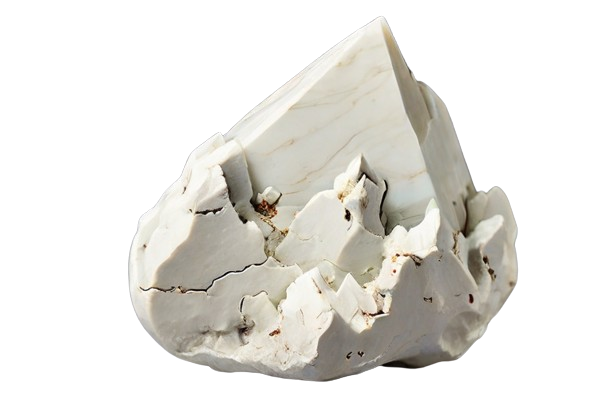
Magnesite is a powerful stone that isn’t like other gems. I’m Christina, your college friend, and I’m prepared to reveal this useful information.Imagine this: In environments rich in magnesium, magnessite, with its sleek vitreous to pearly luster, is like the unsung hero. It may not be the most visually appealing item, but it sure is useful in terms of functionality.
- Not for Brilliant Jewelry:
- Melesite is not chosen for brilliant jewelry; it serves a different purpose.
- It plays a crucial role in the production of magnesium oxide, acting as an important source of magnesium.
- Source of Magnesium:
- Melesite is an essential source of magnesium, contributing to the production of magnesium oxide.
- It works behind the scenes to ensure the availability of magnesium, a significant mineral.
- Unsung Hero:
- Melesite is likened to an unsung hero, working quietly to fulfill its role in the production of magnesium oxide.
- Its importance may not be immediately apparent but is vital for various industrial processes.
- Color Variations:
- While magnesite is typically white or colorless, some variations may exhibit gray, brown, green, or yellow hues.
- Impurities in the mineral contribute to these color variations, giving each specimen its unique personality.
Magnesite is a trustworthy ally that you want in your corner, even though it might not be the red carpet star. Magnesite is for you if it’s useful, necessary, and does its job.
| Property | Description |
|---|---|
| Name | Magnesite |
| Composition | Magnesium carbonate (MgCO₃) |
| Color | White, often with gray streaks or veining |
| Crystal System | Trigonal |
| Hardness | 3.5 – 4.5 on the Mohs scale |
| Luster | Vitreous to pearly |
| Transparency | Transparent to translucent |
| Cleavage | Perfect in three directions, rhombohedral |
| Fracture | Conchoidal to uneven |
| Specific Gravity | 3.0 – 3.2 |
| Streak | White |
| Occurrence | Found in sedimentary rocks associated with the alteration of ultramafic rocks. Major sources include Austria, Greece, and the United States. |
| Uses | – Gemstone Use: Occasionally used in jewelry, but not as common as other gemstones due to its relative softness. |
| – Industrial Use: Mined for its magnesium content, which is used in various industrial applications. | |
| – Metaphysical Beliefs: Associated with calming energy, enhancing visualization, and promoting emotional balance. |
White magnesite is a mineral that is valued for its metaphysical qualities and peaceful appearance. It is made of magnesium carbonate. It is associated with promoting emotional balance and calming energy, but is more frequently mined for industrial uses. It is also occasionally used in jewelry. White Magnesite specifics can differ, so it’s best to check with reliable sources for complete information.
Ulexite:

Ulexite, or the “TV rock,” as some like to refer to it. I’m Christina, your roommate in college, and I’m here to share the secrets of this optical marvel with you.Imagine this: A borate mineral called ulexite is comparable to Harry Potter in the world of crystals.Due to its captivating fiber optic qualities. Surviving in alkaline lake environments, Ulexite is a mineral that can be found in evaporite deposits. Its fibrous crystal structure is truly remarkable.
- Text Overlaid on Ulexite:
- When you overlay written or printed text with a piece of Ulexite, a fascinating optical illusion occurs.
- The text appears to be floating through the crystal, creating a unique visual experience.
- Holographic Effect:
- The optical illusion created by Ulexite is likened to having a holographic machine of your own.
- It introduces a sense of wonder and uniqueness to the viewing experience.
- Default Colorless or White Appearance:
- Ulexite maintains a default colorless or white appearance in its natural state.
- Its unassuming color provides a blank canvas for optical tricks and illusions.
- Sneaky Optical Tricks:
- Ulexite has optical tricks up its sleeve that come into play when placed over various backgrounds.
- A wide range of colors and patterns may appear, playing peek-a-boo and adding an element of surprise to its visual presentation.
Thus, acknowledge Ulexite the next time you’re in the world of crystals. It’s more than just a rock; it’s a work of art that transforms everyday events into breathtaking spectacles.
| Property | Description |
|---|---|
| Name | Ulexite |
| Composition | Sodium calcium borate hydrate (NaCaB₅O₉·8H₂O) |
| Color | Colorless to white |
| Crystal System | Monoclinic |
| Hardness | 2 – 2.5 on the Mohs scale |
| Luster | Silky to vitreous |
| Transparency | Transparent to translucent |
| Cleavage | Perfect in one direction, basal |
| Fracture | Splintery |
| Specific Gravity | 1.95 – 1.96 |
| Streak | White |
| Occurrence | Found in sedimentary evaporite deposits. Major sources include the United States, especially California. |
| Uses | – Optical Use: Known for its unique optical properties, including fiber optic effect where images appear on the cleavage planes. |
| – Ornamental Use: Carved into decorative items. | |
| – Industrial Use: Used in the production of boron compounds. | |
| – Metaphysical Beliefs: Associated with clarity, insight, and enhancing visualization. |
Ulexite is known for its fascinating optical properties, often referred to as the “TV rock” or “television stone” due to its ability to transmit light along its fibers, creating a fiber optic effect. It is also used for ornamental and industrial purposes and is associated with metaphysical properties promoting clarity and visualization. Specific details about Ulexite may vary, and consulting reputable sources is advisable for comprehensive information.
Aragonite:
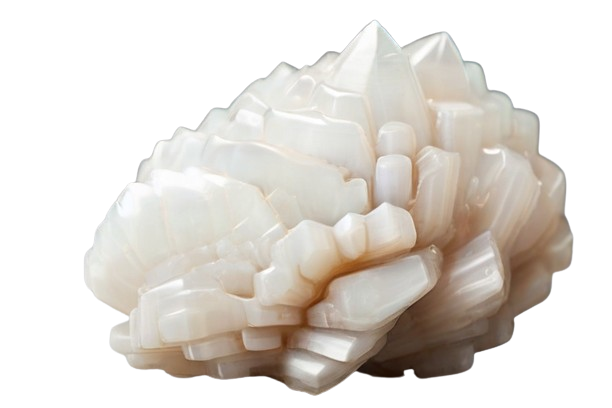
Not only is aragonite a component of Earth’s rock formations, but it also plays a major part in marine magic. I’m Christina, your crystalline enthusiast, and I’m prepared to reveal everything.
- Unique Geological Style:
- Aragonite displays a unique geological style, featuring stalactites hanging from the ceiling or needle-shaped crystals.
- Its distinctive formations contribute to its visual appeal and geological significance.
- Marine Life Building Blocks:
- Aragonite serves as building blocks for marine life, including corals and some mollusks.
- It plays a crucial role in the creation of structures such as coral reefs, acting as a vital component for marine ecosystems.
- Maritime Construction Worker:
- Described as a maritime construction worker, Aragonite contributes to the formation and development of coral reefs.
- Its presence is essential for the well-being and sustainability of marine life.
- Eye-Catching Crystal Patterns:
- Aragonite goes beyond its role as a marine building block and forms eye-catching crystal patterns.
- Its aesthetic appeal extends to ornaments and jewelry, making it a versatile and fashionable mineral.
But there’s still more! Aragonite has access to industrial concerts behind the scenes. It’s a multitasker behind the scenes that does everything from produce cement to aiding in agriculture as a soil conditioner. Comparable to a chameleon among minerals is aragonite. It can be seen strutting in gray, red, orange, and even green and blue hues, as well as rocking white gemstones.
| Property | Description |
|---|---|
| Name | Aragonite |
| Composition | Calcium carbonate (CaCO₃) |
| Color | White or colorless |
| Crystal System | Orthorhombic |
| Hardness | 3.5 – 4 on the Mohs scale |
| Luster | Vitreous to resinous |
| Transparency | Transparent to translucent |
| Cleavage | Perfect in one direction, prismatic |
| Fracture | Subconchoidal to uneven |
| Specific Gravity | 2.94 – 2.95 |
| Streak | White |
| Occurrence | Found in various locations worldwide, often in sedimentary rocks, caves, and hydrothermal veins. Major sources include Spain, Mexico, and the United States. |
| Uses | – Ornamental Use: Carved into decorative items, beads, and jewelry. |
| – Industrial Use: Used in the production of cement and as a gemstone. | |
| – Metaphysical Beliefs: Associated with grounding, stability, and balancing energy. |
White Aragonite is a polymorph of calcium carbonate, often found in sedimentary rocks and other geological formations. It is utilized for ornamental and industrial purposes, and in metaphysical beliefs, it is associated with grounding, stability, and balancing energy. Specific details about White Aragonite may vary, and consulting reputable sources is advisable for comprehensive information.
Mother of Pearl:
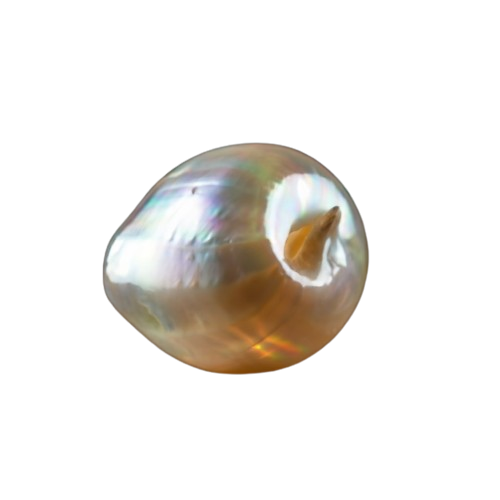
Mother of Pearl is a brilliant creation that comes directly from the seas and the artisans’ imagination. I’m Christina, your college friend, and I’ll be sharing some pearls of wisdom with you about this shimmering marvel.
- Densely Packed Layers:
- Mother of pearl is characterized by densely packed layers, created by mollusks, resembling an underwater work of art.
- Its formation involves a natural process that results in layers of unadulterated magic.
- Interaction with Light:
- Mother of pearl interacts with light in a unique way, producing a captivating range of colors that shimmer and dance.
- The play of light adds to its aesthetic appeal, creating an enchanting visual experience.
- Sought-After for Adornments:
- Mother of pearl is highly sought after for adornment-related purposes due to its glossy look and distinctive color play.
- It is used in inlay work, transforming ordinary objects into works of art, and in the creation of jewelry that adds sparkle.
- Iridescent Magic:
- Despite white being the base color, mother of pearl reveals iridescent magic with tones of blue-green, purple, silver, and grey.
- Hints of beige, golden hues, and even a shadowy black contribute to the diverse and enchanting color palette.
So keep in mind that the next time you’re admiring a delicately crafted inlay or a stunning necklace made of mother of pearl, it’s not just a shell; rather, it’s a work of art that was created deep within the ocean.
| Property | Description |
|---|---|
| Name | Mother of Pearl |
| Composition | Composed of aragonite, a form of calcium carbonate (CaCO₃), and conchiolin, a proteinaceous organic substance. |
| Color | Iridescent white, with flashes of various colors |
| Crystal System | Orthorhombic |
| Hardness | 2.5 – 4.5 on the Mohs scale (Variable hardness due to layered structure) |
| Luster | Subvitreous to dull |
| Transparency | Opaque |
| Cleavage | Absent |
| Fracture | Uneven |
| Specific Gravity | 2.60 – 2.85 |
| Streak | White |
| Occurrence | Formed in the inner layer of the shells of certain mollusks, such as oysters and abalones. |
| Uses | – Ornamental Use: Used as a material for carved cameos, beads, and inlay work. |
| – Jewelry Use: Often used for making jewelry, including earrings, necklaces, and bracelets. | |
| – Decorative Use: Used in various decorative applications, such as inlays and veneers. |
Mother of Pearl is a natural substance formed in the shells of mollusks, prized for its iridescent beauty. It is commonly used in jewelry and ornamental applications, as well as for inlay work. The iridescence is caused by the interference of light waves that are reflected from the layers of aragonite plates. Specific details about White Mother of Pearl may vary, and consulting reputable sources is advisable for comprehensive information.
Kyanite:

Kyanite is an aspirationally cool-sounding mineral with bladed crystals. Your college friend Christina here, ready to impart some wisdom on this delicate marvel.What, then, gives Kyanite its distinct feel? It’s all about those crystal formations with blades, and you know what? Because of those trace elements working their magic, the color variations are like little secrets found in nature.
- Multitasker in Industrial Applications:
- Kyanite serves as a multitasker, playing a role in refractory materials, ceramics production, and exhibiting gemstone-like qualities.
- Its versatility extends to both industrial and decorative applications.
- Transparency and Hardness:
- Transparency is a distinguishing feature of kyanite, contributing to its visual allure.
- It boasts impressive hardness, making it a durable and valuable mineral in various applications.
- Artistic Crystal Structure:
- Kyanite showcases an artistic crystal structure, reflecting the intricate and beautiful work of Mother Nature.
- Its crystal formation adds to its appeal and uniqueness.
- Decorative and Industrial Gem:
- Kyanite is utilized for both decorative and industrial purposes, making it a gem that combines aesthetic and practical qualities.
- Its metaphysical properties add a layer of significance, akin to a mineral equivalent of a Swiss Army knife.
- Nature-Inspired Color Palette:
- The color scheme of kyanite includes white, green, and shades of blue and gray.
- Its colors mirror the diverse and captivating hues found in the natural world, enticing exploration of the color wheel of nature.
Thus, the next time you see kyanite, remember to appreciate it for its silent roles in our everyday materials as well as its beautiful face.
| Property | Description |
|---|---|
| Name | Kyanite (White Kyanite) |
| Composition | Aluminum silicate mineral with the chemical formula Al₂SiO₅ |
| Color | Typically white or colorless, may also have shades of blue, green, gray, or yellow. |
| Crystal System | Triclinic or monoclinic |
| Hardness | 4.5 – 7 on the Mohs scale (Variable depending on crystal orientation) |
| Luster | Vitreous to pearly |
| Transparency | Transparent to translucent |
| Cleavage | Perfect in two directions, typically found in elongated columnar crystals with a bladed structure. |
| Fracture | Splintery |
| Specific Gravity | 3.53 – 3.7 |
| Streak | White |
| Occurrence | Found in metamorphic rocks, particularly in association with high-grade metamorphism. Major sources include Brazil, Nepal, and the United States. |
| Uses | – Gemstone Use: Cut into cabochons, beads, and occasionally faceted for use in jewelry. |
| – Metaphysical Beliefs: Associated with aligning and balancing energy centers, promoting tranquility, and enhancing psychic abilities. |
White Kyanite is a variety of kyanite, a mineral known for its unique bladed crystal formations. It is used in various metaphysical practices for its believed properties related to energy alignment, tranquility, and psychic enhancement. Specific details about White Kyanite may vary, and consulting reputable sources is advisable for comprehensive information.
Marble Stone:

Marble stone is like nature’s art canvas, featuring calcite or dolomite crystals that create those mesmerizing veins and mottled patterns.
- Adoration from Artists and Architects:
- Marble is adored by artists, architects, and décor enthusiasts for its unique charm and versatility.
- Sculptors use it to carve out masterpieces, architects incorporate it into stunning structures, and homeowners add a touch of elegance to their spaces.
- Rockstar of Construction and Design:
- Marble is considered the rockstar of the construction and design world, valued for its aesthetic appeal and practical applications.
- Its use extends to various creative endeavors in both artistic and architectural domains.
- Diverse Color Palette:
- Marble offers a diverse color palette beyond classic whites and grays.
- Beige, cream, and vivid tones make their presence, introduced by chemical impurities that add character to the stone.
- Spicing Things Up:
- Marble likes to spice things up with its range of colors, creating visual interest and variety.
- The incorporation of different hues enhances its aesthetic appeal and makes it a versatile choice for design projects.
Compared to its granite cousin, Marble is the softie in the family. But hey, that softness comes with perks – a smooth texture that feels like silk, a hint of translucency, and that dazzling high polish that reflects sophistication. So, next time you admire a grand sculpture or step into a marble-clad building, remember, it’s not just a rock; it’s a piece of Earth’s history turned into a work of art.
| Property | Description |
|---|---|
| Name | Marble Stone |
| Composition | Metamorphic rock primarily composed of recrystallized carbonate minerals, typically calcite or dolomite. |
| Color | White or predominantly white, but may include gray, black, or other colored veins and patterns. |
| Crystal System | Crystalline structure with interlocking grains |
| Hardness | 3 – 4 on the Mohs scale |
| Luster | Dull to subvitreous |
| Transparency | Translucent to opaque |
| Cleavage | Absent |
| Fracture | Irregular to conchoidal |
| Specific Gravity | 2.55 – 2.7 |
| Streak | White |
| Occurrence | Formed through the metamorphism of limestone or dolostone. Commonly found in mountainous regions and used as a building material for centuries. |
| Uses | – Construction Use: Widely used in architecture and sculpture for buildings, monuments, and decorative items. |
| – Artistic Use: Carved into sculptures, statues, and intricate designs. | |
| – Ornamental Use: Used for countertops, flooring, and various interior design applications. | |
| – Metaphysical Beliefs: Symbolizes purity, protection, and spiritual transformation. |
White Marble Stone is a popular and versatile natural stone widely used in construction, art, and design. Its timeless beauty and various applications make it a prized material for a range of projects. Additionally, it is sometimes associated with metaphysical beliefs, symbolizing purity, protection, and spiritual transformation. Specific details about White Marble Stone may vary based on the type and location of the marble. Consulting reputable sources is advisable for comprehensive information.
Dolomite:

Dolomite is a calcium magnesium carbonate mixture that exhibits a hint of vitreous to pearly luster along with translucent to transparent qualities. Where is its favorite hangout? It prefers sedimentary environments, where it helps to form rocks such as dolostone. What a rock with a variety of skills!
- Expressive Colors:
- Dolomite showcases a diverse range of colors, from brilliant whites to cool grays, playful pinks, and even shades of green.
- The presence of impurities adds personality and contributes to the stone’s vibrant color palette.
- Multifunctional Beauty:
- Dolomite is versatile and serves multiple purposes, making it a valuable choice for various applications.
- Whether used for decoration or construction, dolomite proves to be reliable and aesthetically pleasing.
- Superhero of the Mineral World:
- Dolomite functions as a superhero in the mineral world, serving as a source of magnesium and offering valuable contributions to different industries.
- Its multifunctional nature makes it a standout mineral with practical applications beyond its visual appeal.
So, keep in mind that dolomite is more than just a rock; it’s a versatile mineral leaving its mark in a variety of fields the next time you see those graceful dolostone formations or see it enhancing a construction project.
| Property | Description |
|---|---|
| Name | Dolomite |
| Composition | Calcium magnesium carbonate (CaMg(CO₃)₂) |
| Color | White or colorless, may also appear in shades of pink, green, gray, or brown due to impurities. |
| Crystal System | Trigonal |
| Hardness | 3.5 – 4 on the Mohs scale |
| Luster | Vitreous to pearly |
| Transparency | Transparent to translucent |
| Cleavage | Perfect in three directions, rhombohedral |
| Fracture | Conchoidal to subconchoidal |
| Specific Gravity | 2.8 – 2.9 |
| Streak | White |
| Occurrence | Found in sedimentary rocks and hydrothermal veins. Major sources include the United States, Mexico, and Italy. |
| Uses | – Construction Use: Used as a building material, particularly for aggregate and dimension stone. |
| – Industrial Use: Used in the production of refractory bricks, ceramics, and magnesium oxide. | |
| – Ornamental Use: Carved into decorative items and used for sculptures. | |
| – Metaphysical Beliefs: Associated with promoting emotional balance and relieving stress. |
White Dolomite is a carbonate mineral known for its distinctive rhombohedral cleavage and versatile uses. It is used in construction, industry, and ornamentation and is sometimes associated with metaphysical properties promoting emotional balance and stress relief. Specific details about White Dolomite may vary based on its composition and location. Consulting reputable sources is advisable for comprehensive information.
Jasper:
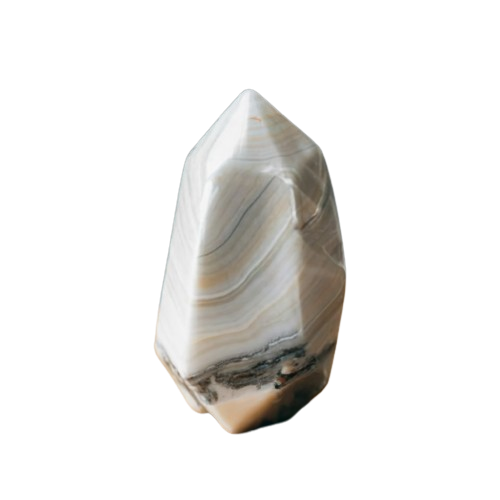
Jasper is an opaque, microcrystalline wonder that displays amazing colors due to the presence of certain mineral impurities. The cool thing is that it goes beyond being straightforward. Nope, Jasper adores showing off those unique patterns—think spots or stripes—and that highly polished surface. Completely its signature motion.
- Earthy Patterns and Vibes:
- Dolomite is appreciated for its earthy patterns and vibes, adding a natural and organic feel to various applications.
- The stone’s inherent aesthetic qualities make it a popular choice for those seeking a connection to nature.
- Versatile in Jewelry:
- Dolomite is commonly used in various forms of jewelry, such as necklaces and rings.
- Its earthy patterns contribute to unique and visually appealing designs that resonate with individuals seeking a natural aesthetic.
- Elaborate Carvings for Ornaments:
- Elaborate carvings on dolomite enhance ornamental pieces like boxes and vases.
- The stone’s versatility allows artisans to create intricate designs, turning functional items into decorative works of art.
More colors, more colors, more colors! Jasper is not a fan of repetition. There are a rainbow of color options, ranging from blazing reds to cozy browns, sunny yellows, and soothing greens.Therefore, keep in mind that jasper is more than just a gem—it’s a storyteller of colors and patterns—the next time you see that trendy jasper necklace or admire a gorgeously carved jasper piece. Keep shining, maintain your curiosity, and let’s dominate this mineral exploration.
| Property | Description |
|---|---|
| Name | Jasper (White Jasper) |
| Composition | Microcrystalline quartz, often with inclusions of various minerals. |
| Color | White or off-white, may also include patterns or bands of other colors. |
| Crystal System | Cryptocrystalline (microcrystalline) |
| Hardness | 6.5 – 7 on the Mohs scale |
| Luster | Dull to vitreous |
| Transparency | Opaque |
| Cleavage | Absent |
| Fracture | Conchoidal to uneven |
| Specific Gravity | 2.58 – 2.91 |
| Streak | White |
| Occurrence | Found in sedimentary, igneous, and metamorphic rocks. |
| Uses | – Ornamental Use: Carved into beads, cabochons, and other decorative items. |
| – Jewelry Use: Used in various jewelry pieces, including necklaces, bracelets, and earrings. | |
| – Metaphysical Beliefs: Associated with grounding energy, promoting tranquility, and balancing emotions. |
White Jasper is a variety of jasper, a microcrystalline quartz with a variety of uses, especially in ornamental and jewelry applications. It is often associated with metaphysical properties promoting grounding, tranquility, and emotional balance. Specific details about White Jasper may vary, and consulting reputable sources is advisable for comprehensive information.
Grossular Garnet:

Grossular garnet is a species that includes green gems like tsavorite, which is dubbed the Beyoncé of the gem world. Its clarity and unadulterated genius? Complete gems, in fact. Hold your breath, because when sliced precisely, some of these beauties can even create the illusion of an asterism, resembling stars. I mean, cosmic glam!
- A-Lister in the Mineral World:
- Grossular is considered an A-lister in the mineral world, appreciated for its unique geological formations, collector’s gems, and use in cherished jewelry pieces.
- Latin Origin – “Grossularia”:
- The name Grossular is derived from the Latin word “grossularia,” which means gooseberry, possibly inspired by the appearance of the green variety of the fruit.
- Colorful Spectrum:
- Grossular exhibits a vibrant color spectrum, including shades of vibrant oranges, cool greens, sunny yellows, earthy browns, and pure whites.
- The diverse colors are attributed to the presence of various metal ions and trace elements, creating a mineral rainbow effect.
So keep in mind that Grossular Garnet is more than just a gem—it’s a stylish rock with a name as sophisticated as its hues—the next time you admire one of these pendants or any other masterpiece made of the mineral.
| Property | Description |
|---|---|
| Name | Grossular Garnet |
| Composition | Calcium aluminum silicate (Ca₃Al₂(SiO₄)₃) |
| Color | White or colorless, but may also appear in shades of green, yellow, brown, pink, or red. |
| Crystal System | Cubic |
| Hardness | 6.5 – 7.5 on the Mohs scale |
| Luster | Vitreous to resinous |
| Transparency | Transparent to translucent |
| Cleavage | Absent |
| Fracture | Conchoidal |
| Specific Gravity | 3.57 – 3.73 |
| Streak | White |
| Occurrence | Found in metamorphic rocks and skarn deposits. Major sources include the United States, Mexico, and Canada. |
| Uses | – Gemstone Use: Cut and faceted for use in jewelry. |
| – Ornamental Use: Carved into beads, cabochons, and other decorative items. | |
| – Metaphysical Beliefs: Associated with promoting stability, confidence, and grounding energy. |
White Grossular Garnet is a variety of grossular garnet, a member of the garnet group of minerals. It is valued for its beauty and is used in various forms, including gemstones and ornamental carvings. In metaphysical beliefs, it is associated with stability, confidence, and grounding energy. Specific details about White Grossular Garnet may vary, and consulting reputable sources is advisable for comprehensive information.
Jade:
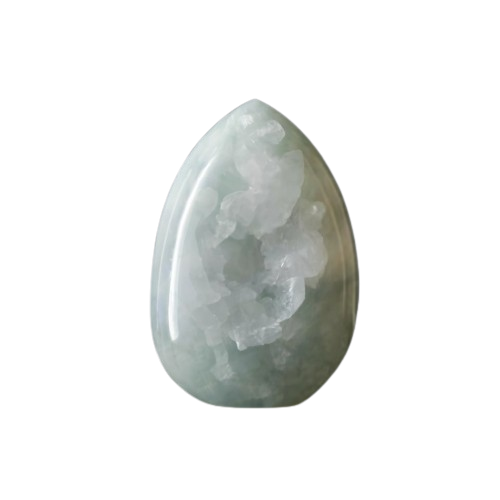
Meet Jadeite and Nephrite, two VIPs in the mineral world who come to mind when we talk about jade. These gemstones, especially when they show off that timeless green hue, are like the power couple of jewelry. Consider them to be the Beyoncé and Jay-Z of the gem world: classic, robust, and breathtakingly beautiful. And get this: they’ve been making waves in ornaments, weapons, and tiny sculptures; they’re not just for show. How adaptable!
- Cultural Passport in History:
- Jade holds cultural significance with its origins deeply rooted in China, where it has been extracted and crafted for centuries, dating back to the Stone Age.
- Enduring Legacy:
- The enduring legacy of jade spans centuries, showcasing its timeless appeal and ability to captivate attention throughout history.
- Diverse Color Palette:
- Jade presents a diverse color palette, featuring calm lavenders, sunshine yellows, earthy browns, pristine whites, mysterious blacks, and peaceful greens.
- The gem serves as nature’s own color wheel, showcasing a range of hues that add to its aesthetic allure.
- Impressive Hardness:
- Jade boasts a robust hardness, scoring between 6 to 7 on the Mohs Hardness Scale.
- Its strength aligns with its beauty, making it not just a visually appealing gem but also a durable one.
The next time you see a pendant made of jade or a finely carved work of art, keep in mind that these items are more than just gemstones; they are pieces of history, emblems of tenacity, and timeless displays of beauty.
| Property | Description |
|---|---|
| Name | Jade |
| Composition | Jadeite (Sodium aluminum silicate) or nephrite (Calcium magnesium iron silicate) |
| Color | White or colorless, but may also appear in shades of green, lavender, yellow, brown, or black. |
| Crystal System | Jadeite: Monoclinic; Nephrite: Amphibole group |
| Hardness | Jadeite: 6.5 – 7 on the Mohs scale; Nephrite: 6 – 6.5 |
| Luster | Waxy to vitreous |
| Transparency | Translucent to opaque |
| Cleavage | None |
| Fracture | Splintery to fibrous |
| Specific Gravity | Jadeite: 3.30 – 3.38; Nephrite: 2.90 – 3.03 |
| Streak | White |
| Occurrence | Jadeite: Found in metamorphic rocks. Nephrite: Found in metamorphic rocks and riverbeds. Major sources include Myanmar, China, and Canada. |
| Uses | – Jewelry Use: Carved into beads, cabochons, and various jewelry items. |
| – Artistic Use: Carved into sculptures, figurines, and decorative items. | |
| – Cultural Significance: Highly valued in many cultures and has symbolic importance. | |
| – Metaphysical Beliefs: Associated with purity, harmony, and promoting balance. |
White Jade, whether composed of jadeite or nephrite, is a prized and culturally significant gemstone known for its beauty and symbolic importance. It is widely used in jewelry, art, and traditional carvings. In metaphysical beliefs, White Jade is often associated with purity, harmony, and promoting balance. Specific details about White Jade may vary, and consulting reputable sources is advisable for comprehensive information.
Aventurine:
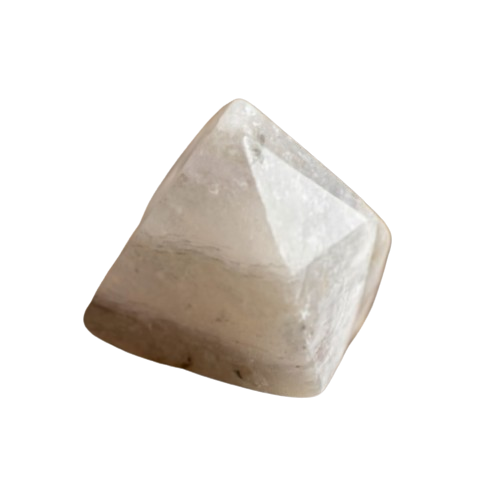
Aventurine is the glam queen of quartz, with a sparkle that can rival a night under the stars. What’s this shimmering substance’s secret? Adventureescence is a captivating effect caused by mica and other minerals hiding and seeking within the quartz. Aventurine can be likened to a crystal ball that you own on your own.
- Center of Attention:
- Aventurine thrives as the center of attention, often stealing the show in jewelry and decorative carvings.
- Its translucency and alluring sheen contribute to its captivating presence.
- Upbeat Vibes:
- Aventurine is renowned for its upbeat vibes, considered by some as a wearable good luck charm.
- It is viewed as a pocket-sized positive energy source, bringing prosperity and luck.
- Diverse Color Palette:
- While green is the most popular color, aventurine exhibits a diverse range of hues, including white, blue, brown, peach, yellow, and even a hint of red.
- The rainbow of colors adds vibrancy to crystal collections, making aventurine a versatile and visually appealing gem.
The next time you find yourself drawn to a carved masterpiece or an aventurine pendant, remember that it’s more than just a crystal—it’s a sparkling companion that will brighten your path and bring good fortune.
| Property | Description |
|---|---|
| Name | Aventurine |
| Composition | A variety of quartz with inclusions of platy minerals, typically muscovite or hematite. |
| Color | White or creamy white, often with a shimmery or sparkly appearance due to inclusions. May also have shades of light gray or pale yellow. |
| Crystal System | Hexagonal |
| Hardness | 6.5 – 7 on the Mohs scale |
| Luster | Vitreous to pearly |
| Transparency | Translucent |
| Cleavage | Absent |
| Fracture | Conchoidal |
| Specific Gravity | 2.64 – 2.69 |
| Streak | White |
| Occurrence | Found in metamorphic rocks, especially in regions with abundant quartz deposits. |
| Uses | – Gemstone Use: Cut into cabochons, beads, and occasionally faceted for use in jewelry. |
| – Ornamental Use: Carved into decorative items and figurines. | |
| – Metaphysical Beliefs: Associated with luck, prosperity, and promoting a sense of well-being. |
White Aventurine is a variety of quartz known for its shimmery or sparkly appearance, caused by the presence of reflective mineral inclusions. It is used in various forms, including gemstones and ornamental carvings, and is often associated with metaphysical properties promoting luck, prosperity, and a sense of well-being. Specific details about White Aventurine may vary, and consulting reputable sources is advisable for comprehensive information.
Coral:
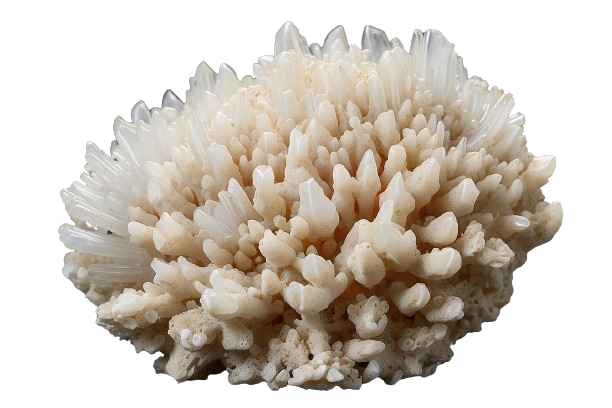
Coral is a living artwork created by marine polyps, not your average gemstone. Yes, you read correctly: microscopic sea life is producing a work of art! Coral’s colors? They resemble a miraculous partnership between the coral species and the habitat in which they flourishIt’s all about those vibrant colors and the unique branching or asymmetrical textures. Coral adds a hint of oceanic elegance to any jewelry piece, whether it’s a carved masterpiece or a beaded necklace.
- Cultural Significance:
- Coral extends beyond aesthetics; it holds cultural significance and has a long history.
- Many cultures associate coral with healing and protective qualities, representing strength and positive energy.
- Mysterious Aura:
- Coral carries a mysterious aura, adding an element of intrigue to its overall appeal.
- Diverse Color Display:
- Coral showcases a diverse range of colors, including traditional hues like white, pink, and red.
- Some varieties exhibit unique tones of orange, blue, and black, resembling a vibrant coral reef within jewelry collections.
And just a quick note: sustainable harvesting methods are essential when considering environmental concerns. Our goal is to preserve the health of these aquatic treasures for future generations.next time you rock a piece of Coral jewelry, remember, it’s not just an accessory; it’s a piece of the ocean’s artistry, a symbol of culture, and a guardian of positive energy.
| Property | Description |
|---|---|
| Name | Coral |
| Composition | Calcium carbonate, primarily aragonite |
| Color | White or colorless, but may also appear in shades of pink, red, orange, blue, and other colors due to organic pigments and minerals. |
| Crystal System | Not applicable (organic material) |
| Hardness | 3 on the Mohs scale |
| Luster | Vitreous |
| Transparency | Translucent to opaque |
| Cleavage | Absent |
| Fracture | Conchoidal |
| Specific Gravity | 2.60 – 2.70 |
| Streak | White |
| Occurrence | Formed by colonies of marine invertebrates known as coral polyps. Found in warm, shallow marine environments. Major sources include the Mediterranean Sea, the Red Sea, and the Pacific Ocean. |
| Uses | – Jewelry Use: Carved into beads, cabochons, and used in various types of jewelry. |
| – Artistic Use: Carved into sculptures, figurines, and decorative items. | |
| – Cultural Significance: Has been used in jewelry and ornaments for centuries and holds cultural and symbolic importance in various societies. | |
| – Metaphysical Beliefs: Associated with protection, transformation, and emotional balance. |
White Coral is a natural organic material formed by the skeletons of marine polyps. It has been used in jewelry and decorative arts for centuries and holds cultural and metaphysical significance. In metaphysical beliefs, White Coral is often associated with protection, transformation, and emotional balance. Specific details about White Coral may vary, and consulting reputable sources is advisable for comprehensive information.
Buffalo Turquoise:

Buffalo turquoise is not your typical turquoise; rather, it’s a desaturated, lighter version of the calcite mineral that resembles turquoise in many ways. It’s becoming well-known in the gemstone industry, much like the stylish, free-spirited cousin of turquoise.
- White Buffalo Stone Alias:
- White Buffalo Stone, also known as buffalo turquoise, is a type of calcite with a resemblance to dolomite.
- Its serene white hues, coupled with dark patterns in black, gray, or brown, bring a bohemian touch to jewelry designs.
- Formation Similarity to Turquoise:
- The formation process of White Buffalo Stone is akin to turquoise, adding an element of mystery to its origins.
- Trade Name and Origin:
- The trade name “White Buffalo Stone” serves as a distinctive label, signifying that these stones are native to the picturesque landscapes of Nevada.
Therefore, keep in mind that buffalo turquoise jewelry is more than just a gemstone—it’s a statement piece with a distinctive backstory—the next time you accessorize yourself with it. Let’s continue this crystal journey together, staying bohemian-chic and rocking those stylish vibes!
| Property | Description |
|---|---|
| Name | Buffalo Turquoise |
| Composition | Often a type of white Howlite or Magnesite that is dyed to resemble turquoise. Genuine white turquoise is rare and may be referred to as “White Buffalo Turquoise.” |
| Color | White or off-white, may be dyed to imitate turquoise shades. |
| Crystal System | Not applicable (turquoise is typically a phosphate mineral, but Buffalo Turquoise may be imitating the appearance of turquoise without being turquoise itself). |
| Hardness | Varies depending on the actual mineral used (Howlite or Magnesite) |
| Luster | Dull to subvitreous |
| Transparency | Opaque |
| Cleavage | Howlite: Perfect in one direction; Magnesite: Imperfect in one direction |
| Fracture | Conchoidal to uneven |
| Specific Gravity | Howlite: 2.53; Magnesite: 3.0 |
| Streak | White |
| Occurrence | Howlite: Found in evaporite deposits. Magnesite: Found in metamorphic rocks. Buffalo Turquoise is often created through treatment processes to imitate the appearance of turquoise. |
| Uses | – Jewelry Use: Carved into beads, cabochons, and used in various types of jewelry. |
| – Artistic Use: Used for decorative items and sculptures. | |
| – Cultural Significance: May be marketed as an alternative to genuine turquoise in Native American and Southwestern-inspired jewelry. | |
| – Metaphysical Beliefs: Similar to turquoise, it may be associated with protection, healing, and positive energy. |
Buffalo Turquoise is a term often used to describe white stones, such as Howlite or Magnesite, that have been dyed to imitate the appearance of turquoise. Genuine white turquoise is rare and may be referred to as “White Buffalo Turquoise.” Specific details about Buffalo Turquoise may vary, and consulting reputable sources is advisable for comprehensive information.
Moss in Snow Jade:
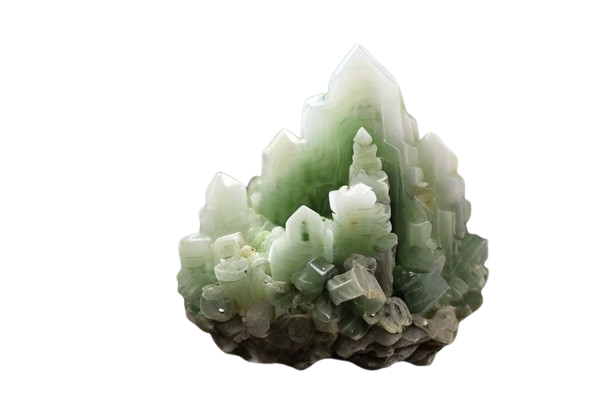
Moss in Snow Jade gently peeping through a perfect snowfall. That is the striking color combination that Moss in Snow Jade offers. A special kind of jade made of actinolite and quartz, combining the artistic qualities of nature.
- Appearance of Snow Jade Moss:
- Snow Jade Moss features a white or colorless base.
- It showcases light green, olive, or lime green inclusions resembling moss.
- Aesthetic Appeal and Winter Imagery:
- Snow Jade Moss captures the spirit of a tranquil winter scene with the added beauty of vibrant greenery.
- It allows wearers to adorn themselves with jewelry inspired by the Himalayas, adding style and elegance.
- Strength and Versatility:
- Snow Jade Moss is not only aesthetically pleasing but also robust, boasting a Mohs Hardness Score of 6.5-7.
- Its strength makes it suitable for ornamental carvings and a variety of jewelry, providing a touch of natural allure.
Therefore, Moss in Snow Jade is here to enhance your crystal collection, regardless of whether you’re drawn to the vivid hues of moss or the serene coolness of snow.
| Property | Description |
|---|---|
| Name | Moss in Snow Jade |
| Composition | A variety of white jade with inclusions of green mineral “moss” patterns, often resembling a snowy landscape. |
| Color | White with green moss-like inclusions, resembling a snowy scene. |
| Crystal System | Not applicable (jade is a compact, dense aggregate of microscopic crystals) |
| Hardness | 6 – 7 on the Mohs scale |
| Luster | Vitreous to waxy |
| Transparency | Translucent to opaque |
| Cleavage | Absent |
| Fracture | Conchoidal to splintery |
| Specific Gravity | 2.90 – 3.03 |
| Streak | White |
| Occurrence | Found in metamorphic rocks, particularly in regions with jade deposits. Major sources include Myanmar, China, and Russia. |
| Uses | – Jewelry Use: Carved into beads, cabochons, and used in various types of jewelry. |
| – Artistic Use: Carved into sculptures, figurines, and decorative items. | |
| – Metaphysical Beliefs: Associated with purity, tranquility, and balance. |
Moss in Snow Jade is a variety of white jade with distinctive green moss-like inclusions that create patterns resembling a snowy landscape. It is used in jewelry, art, and carvings, and is often associated with metaphysical properties promoting purity, tranquility, and balance. Specific details about Moss in Snow Jade may vary, and consulting reputable sources is advisable for comprehensive information.
Andalusite:
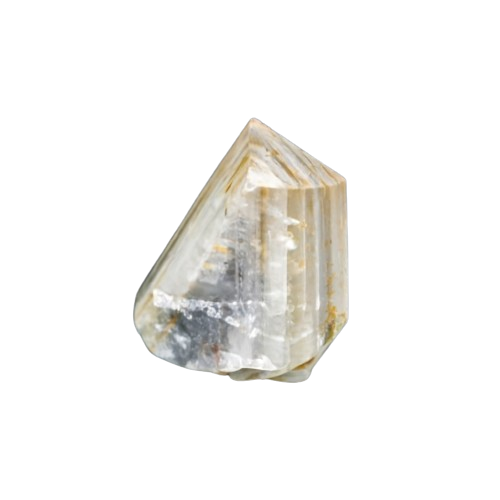
My friends, andalusite is not your typical gem. Its pleochroic nature makes it akin to a crystal world chameleon. Imagine that as you move the crystal, various colors will become visible. It’s a visual symphony of green, white, brown, and reddish-brown that keeps you wondering around every corner.
- Transparency and Captivating Colors:
- Andalusite boasts remarkable transparency, allowing light to pass through with brilliance.
- Its captivating colors enhance its visual appeal, making it a standout gemstone in the jewelry industry.
- Illuminating Possessions:
- The gem has the ability to illuminate and enhance the beauty of prized possessions, adding a touch of elegance.
- Luster for Sophistication:
- Andalusite exhibits a vitreous to sub-vitreous luster, contributing to its sophisticated appearance.
- This luster makes it a popular and elegant choice for those who appreciate uniqueness in their jewelry.
- Versatility Across Industries:
- Andalusite is not limited to the jewelry industry; it excels in various sectors.
- Its high melting point and thermal stability make it a gem that can withstand heat, adding to its versatility.
Andalusite is an eye-catching material that is sure to make a statement, regardless of your interest in its color dance or practicality.
| Property | Description |
|---|---|
| Name | Andalusite |
| Composition | Aluminum silicate mineral with the chemical formula Al₂SiO₅ |
| Color | White or colorless, may also have shades of pink, yellow, green, or brown. |
| Crystal System | Orthorhombic |
| Hardness | 6.5 – 7.5 on the Mohs scale |
| Luster | Vitreous to nearly adamantine |
| Transparency | Transparent to translucent |
| Cleavage | Poor in one direction, distinct in two others |
| Fracture | Subconchoidal to uneven |
| Specific Gravity | 3.14 – 3.20 |
| Streak | White |
| Occurrence | Found in metamorphic rocks, often in association with high-grade metamorphism. Major sources include Brazil, Sri Lanka, and Spain. |
| Uses | – Gemstone Use: Cut and faceted for use in jewelry. |
| – Ornamental Use: Carved into beads, cabochons, and decorative items. | |
| – Industrial Use: Used in refractories and as a raw material for the production of certain ceramics. | |
| – Metaphysical Beliefs: Associated with grounding energy, clarity, and balance. |
White Andalusite is a variety of andalusite, a mineral known for its distinct cross-shaped inclusions. It is valued for its gemstone properties and is used in various forms, including jewelry and ornamental carvings. In metaphysical beliefs, White Andalusite is often associated with grounding energy, clarity, and balance. Specific details about White Andalusite may vary, and consulting reputable sources is advisable for comprehensive information.
Prehnite:
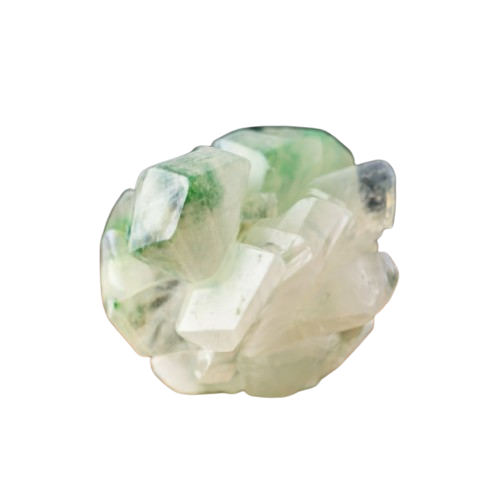
Prehnite is an artistic creation rather than merely a crystal. Imagine crystalline formations that have a pearly to vitreous luster as they catch the light. What about the hues? Yes, they are a flurry of color brought to life by manganese or iron impurities. Colors like white, pale green to yellow-green, brown, gray, and colorless resemble the palette of nature itself.
- Striking Hues:
- Prehnite stands out with its striking and captivating hues, making it an eye-catching gemstone.
- Transparency and Translucency:
- The gem exhibits a unique combination of transparency or translucent qualities, allowing light to interact with it in enchanting ways.
- Exceptional Durability:
- Beyond its visual appeal, Prehnite boasts exceptional durability, making it suitable for various applications.
- Focal Point in Carvings and Jewelry:
- The flawless crystal of Prehnite can serve as the focal point in elaborate carvings, showcasing its beauty and uniqueness.
- It is also a popular choice for jewelry, where its stunning hues and durability contribute to timeless pieces.
- Enchanting Lighting Display:
- When exposed to light, Prehnite creates an enchanting lighting display, further enhancing its allure and charm.
Prehnite is here to add a luxurious touch to your crystal collection, regardless of your preference for earthy browns, pristine whites, or subtle greens.
| Property | Description |
|---|---|
| Name | Prehnite |
| Composition | Calcium aluminum silicate hydroxide (Ca₂Al₂Si₃O₁₂(OH)₂) |
| Color | White or colorless, may also have shades of pale green, yellow, or brown. |
| Crystal System | Orthorhombic |
| Hardness | 6 – 6.5 on the Mohs scale |
| Luster | Vitreous to pearly |
| Transparency | Transparent to translucent |
| Cleavage | Poor in one direction, indistinct in two others |
| Fracture | Conchoidal to uneven |
| Specific Gravity | 2.80 – 2.90 |
| Streak | White |
| Occurrence | Found in hydrothermal veins and in association with basaltic lavas. Major sources include Germany, Australia, and the United States. |
| Uses | – Gemstone Use: Cut and faceted for use in jewelry. |
| – Ornamental Use: Carved into beads, cabochons, and decorative items. | |
| – Metaphysical Beliefs: Associated with calming energy, inner peace, and spiritual growth. |
White Prehnite is a variety of prehnite, a mineral known for its pale green to colorless appearance. It is used in jewelry and ornamental carvings and is often associated with metaphysical properties promoting calming energy, inner peace, and spiritual growth. Specific details about White Prehnite may vary, and consulting reputable sources is advisable for comprehensive information.
Apatite:
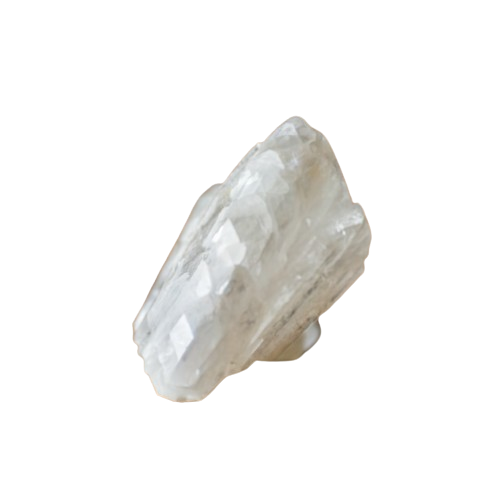
With its distinct crystalline structure, apatite is a gem that is just waiting to be found.
- Fluorescent Glow:
- Apatite exhibits a captivating fluorescent glow when exposed to ultraviolet light, adding a magical and alluring element.
- Playful Origin of the Name:
- The name “apatite” originates from the Greek word “apatein,” which means “to deceive,” reflecting its tendency to be mistaken for other gemstones.
- Hide-and-Seek Game:
- Apatite often plays a game of hide-and-seek, leading to mistaken identities with other gems such as tourmaline, aquamarine, and topaz.
Apatite is a rainbow of colors, ranging from clear, white gems to vivid greens, sunny yellows, and cool blues. Hydroxyl, fluorine, or chlorine allow it to display this beautiful spectrum. Oh, and the highly sought-after blue apatite steals the show, particularly when used to create exquisite jewelry.
| Property | Description |
|---|---|
| Name | Apatite |
| Composition | A group of phosphate minerals with the chemical formula Ca₅(PO₄)₃(F,Cl,OH) |
| Color | White or colorless, may also appear in shades of green, blue, yellow, brown, or violet. |
| Crystal System | Hexagonal |
| Hardness | 5 on the Mohs scale |
| Luster | Vitreous to subresinous |
| Transparency | Transparent to translucent |
| Cleavage | Poor in one direction, indistinct in two others |
| Fracture | Conchoidal to uneven |
| Specific Gravity | 3.16 – 3.22 |
| Streak | White |
| Occurrence | Found in igneous, sedimentary, and metamorphic rocks. Major sources include Brazil, Mexico, and Russia. |
| Uses | – Gemstone Use: Cut and faceted for use in jewelry. |
| – Ornamental Use: Carved into beads, cabochons, and decorative items. | |
| – Industrial Use: Used as a phosphate fertilizer. | |
| – Metaphysical Beliefs: Associated with communication, clarity, and intellect. |
White Apatite is a variety of apatite, a group of phosphate minerals. It is used in various forms, including gemstones and ornamental carvings, and is often associated with metaphysical properties promoting communication, clarity, and intellect. Specific details about White Apatite may vary, and consulting reputable sources is advisable for comprehensive information.
Alabaster:

The soft and translucent charm is what makes alabaster, a special kind of gypsum, so appealing. Imagine it with soft, pastel hues, exhibiting a creamy, silky texture that is utterly enticing to the touch. This white stone is a tactile marvel as well as an eye-candy, which is why it’s a popular choice for sculptures, wall décor, and mood-setting ambient lighting.
- Thermal Transformation:
- Alabaster undergoes a fascinating thermal transformation when submerged in hot water, resembling marble and becoming opaque.
- Versatile Adaptability:
- Acting like a chameleon in the mineral kingdom, alabaster gracefully adapts to various settings with its transformative qualities.
Alabaster is most striking in color, ranging from pure white to soft pink, cream, delicate beige, and those exquisite light gray tones. The allure of this creative marvel is enhanced by the stories that each hue conveys.
| Property | Description |
|---|---|
| Name | Alabaster |
| Composition | A fine-grained, translucent form of gypsum (calcium sulfate dihydrate) |
| Color | White or light-colored, may also have natural veining or patterns. |
| Crystal System | Not applicable (amorphous) |
| Hardness | 1.5 – 2 on the Mohs scale |
| Luster | Pearly to dull |
| Transparency | Translucent |
| Cleavage | Perfect in one direction |
| Fracture | Conchoidal to uneven |
| Specific Gravity | 2.3 – 2.4 |
| Streak | White |
| Occurrence | Formed in sedimentary deposits and can be found in various locations around the world. |
| Uses | – Artistic Use: Carved into sculptures, statues, and decorative items. |
| – Architectural Use: Used in architecture for carving intricate designs and details. | |
| – Crafts: Used for carving small decorative items and ornaments. | |
| – Religious Art: Historically used for religious sculptures and carvings. | |
| – Metaphysical Beliefs: Associated with calming energy and spiritual openness. |
White Alabaster is a form of gypsum that has been used for centuries in art, architecture, and religious artifacts. Its softness makes it easy to carve, and it is known for its translucency and ability to take on a smooth polish. In metaphysical beliefs, White Alabaster is often associated with calming energy and spiritual openness. Specific details about White Alabaster may vary, and consulting reputable sources is advisable for comprehensive information.
Caring for White Crystals:
Cleaning and storing white gemstones, such as sapphires or diamonds, requires careful attention to detail. Even though these stones are typically hard, proper care is still required. To clean, gently brush after a brief soak in a mild detergent solution or wipe with a lint-free cloth.
| Care Aspect | Recommended Care for White Gemstones |
|---|---|
| Cleaning | – Wipe with a lint-free cloth to remove surface dirt and oils. – Soak briefly in a mild detergent solution to dissolve stubborn residues. – Use a soft brush to gently clean hard-to-reach areas. |
| Storage | – Use a compartmentalized gemstone box to prevent scratches and contact with other jewelry. – Store each white gemstone separately to avoid potential damage caused by friction. |
| Exposure to Conditions | – Avoid exposing white gemstones to extreme conditions, such as sudden temperature changes. – Keep them away from direct sunlight to prevent color fading. |
| Physical Activities | – Remove white gemstone jewelry during physical activities, including sports or heavy lifting, to minimize the risk of damage or impact. |
| Overall Maintenance Guidelines | – Regularly inspect your white gemstones for any signs of damage or loose settings. – Schedule professional cleaning and inspection to ensure long-term beauty and durability. |
Chakra:
Connection to the Crown Chakra:
- White crystals are often linked to the Crown Chakra, the energy center located at the top of the head, which is associated with spiritual enlightenment, divine wisdom, and universal connection.
How To Clean White Crystals?
To maintain their ideal energetic state, white crystal gems might occasionally require assistance. Some white crystals have the extraordinary capacity to purge negative energies on their own without the help of an outside source. But not everyone has this natural ability, which is where your thoughtful attention is needed.
- Moonlight Bath:
- Place the white stones under the gentle light of a full moon to cleanse and recharge them naturally.
- Saltwater Soak:
- Submerge the white gemstones in a bowl of saltwater, preferably sea salt, to purify and rejuvenate their energies.
- Sunlight Exposure:
- Allow the stones to bask in the sunlight, harnessing the energy of the sun to cleanse and revitalize their properties.
- Selenite Charging Plate:
- Use a selenite charging plate to amplify the cleansing and charging process, enhancing the potency of the white stones.
- Sound Cleansing:
- Use sound vibrations, such as from a singing bowl or a tuning fork, to clear any negative energy and refresh the white stones.
- Visualization and Intention Setting:
- Hold the stones in your hands, visualize pure white light surrounding them, and set positive intentions for their energy renewal.
- Crystals Cluster:
- Place the white gemstones on a bed of clear quartz crystals to amplify their energy and cleanse them in a harmonious cluster.
- Reiki Energy Healing:
- Utilize Reiki energy healing techniques by directing healing energy towards the white stones, promoting balance and purity.
- Affirmation Ritual:
- Speak affirmations of purity and positivity over the stones, reinforcing their inherent qualities and dispelling any lingering negativity.
- Flower Essence Bath:
- Immerse the stones in a bowl of water infused with flower essences known for their cleansing and purifying properties.
Among these techniques are:
| Cleansing Method | Procedure |
|---|---|
| Moonlight Bath | Place crystals under the light of the full moon overnight, retrieving them the next morning. |
| Saltwater Soak | Submerge crystals in a saltwater solution for a minimum of 24 hours. |
| Earth’s Embrace | Bury crystals in the garden, allowing them to cleanse for up to 48 hours. |
| Flowing Renewal | Hold each crystal under running water for at least a minute individually. |
| Sacred Smoke Cleanse | Burn sacred herbs or incense over crystals, invoking cleansing through prayer. |
| Himalayan Salt Bed | Lay stones on a bed of Himalayan salt for approximately 4 hours, leaving them when not in use. |
| Rainfall Cleanse | If blessed with rain, leave crystals out to be cleansed by the natural downpour. |
Never forget that not all crystals are meant to be submerged in water. Before utilizing any of the above-mentioned water-based techniques, it’s crucial to confirm because certain crystalline structures dissolve in water.
How to Use White Crystals?
- Connecting with White Crystals:
- Wearing Against the Skin:
- Benefits: Gemstone jewelry allows healing vibrations to synchronize with personal vibrations.
- Outcome: Facilitates the release of chakra blockages and maintains an aura cleanse.
- Incorporating into Healing Practices:
- Methods:
- Reiki healing.
- Crystal grids.
- Building altars for mindful meditation.
- Purpose: Enhances the effectiveness of healing practices.
- Methods:
- Meditation:
- Approach: Holding a crystal in hand during meditation.
- Result: Opens individuals to deeper spiritual messages.
- Spiritual Practices:
- Connection to Spirit World:
- Ideal for tarot, scrying, and practices involving spirit guides.
- Benefits: Enhances the connection with energy from other realms.
- Connection to Spirit World:
- Wearing Against the Skin:
Embracing white crystals through various practices fosters a holistic approach to spiritual well-being and energy alignment.
Conclusion:
The fascinating world of White Crystals is home to a wide variety of varieties, each with special qualities and meanings. These crystals have mesmerized people for centuries, from the pure purity of Clear Quartz to the calming energies of Selenite and the protective properties of White Agate.White crystals serve as lighthouses in the fabric of crystal lore, pointing the way toward a more profound comprehension of both the self and the outside world. Whether you are an experienced crystal lover or a novice to the fascinating world of gemstones, working with white crystals is an ongoing exploration that presents countless opportunities for personal development, healing, and spiritual awakening. Thus, welcome the radiant energy of white crystals and allow their light to illuminate your path as you embark on the enthralling path of self-realization and overall wellbeing.
FAQs:
Q: What are the most common types of white crystals mentioned in the article?
The article covers various types of white crystals, including Clear Quartz, Selenite, White Agate, Howlite, and White Tourmaline.
Q: How do white crystals contribute to spiritual growth and transformation?
White crystals contribute to spiritual growth by enhancing meditation practices, promoting mental clarity, fostering emotional balance, and offering protective energies.
Q: Can white crystals be used for specific intentions or purposes?
Yes, white crystals can be used for various intentions, such as amplifying intentions (Clear Quartz), promoting calmness and stress relief (Selenite), and providing protection (White Tourmaline).
Q: What are some practical ways to incorporate white crystals into daily life?
Practical ways to incorporate white crystals include creating crystal grids, wearing crystal jewelry, placing crystals in specific areas of your living space, or using them during meditation.
Q: Are there any precautions or considerations when working with white crystals?
While white crystals are generally considered safe, it’s essential to cleanse and recharge them regularly. Additionally, some individuals may be sensitive to the energies of certain crystals, so it’s advisable to pay attention to personal reactions.

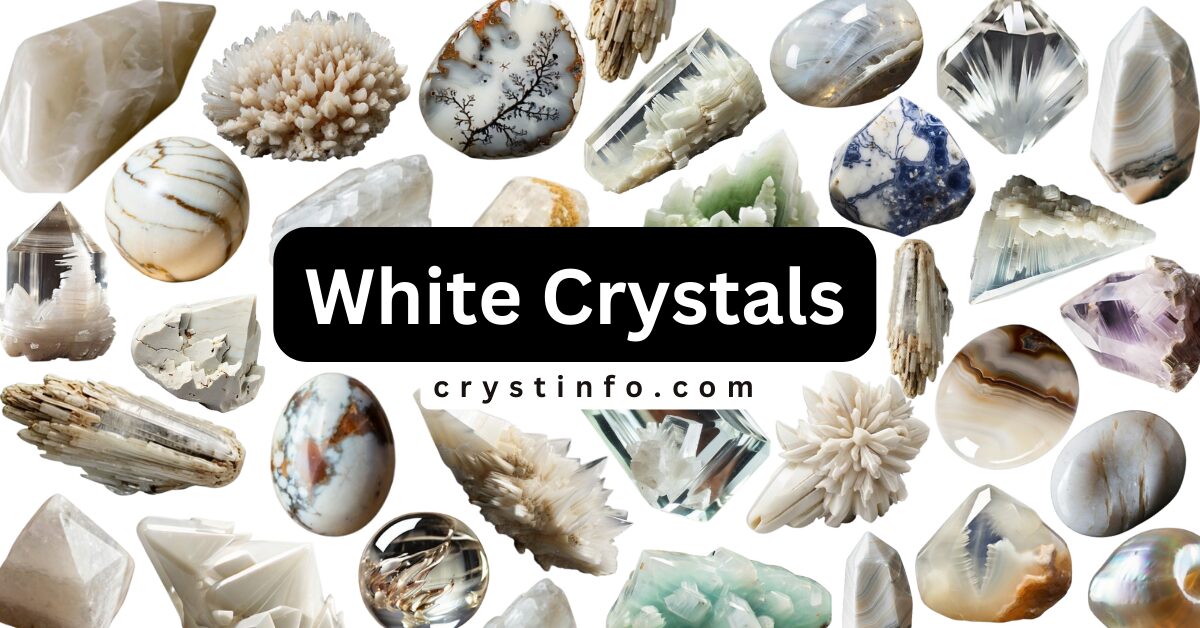

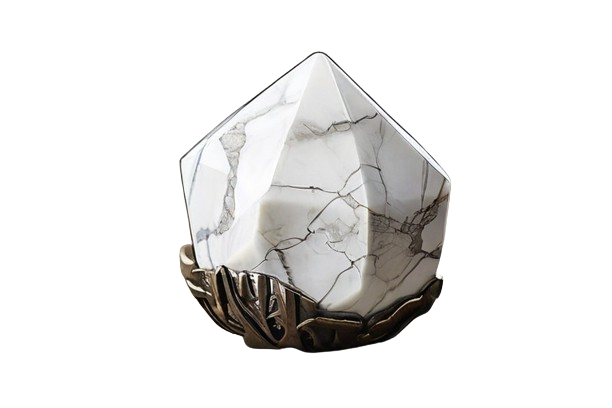

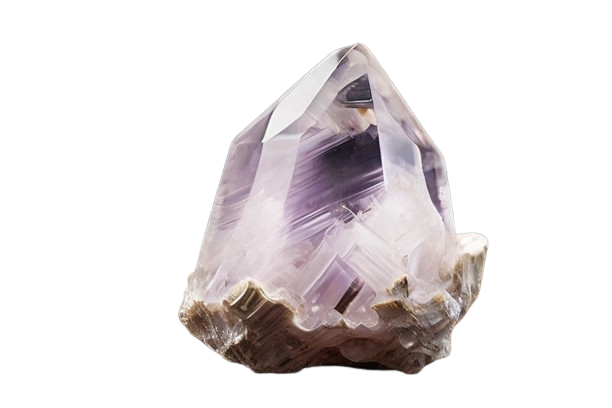



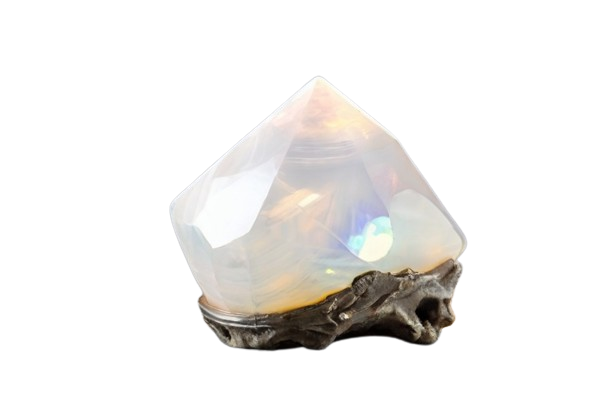

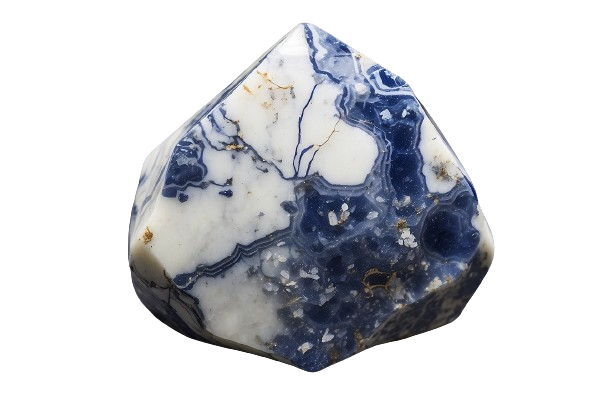
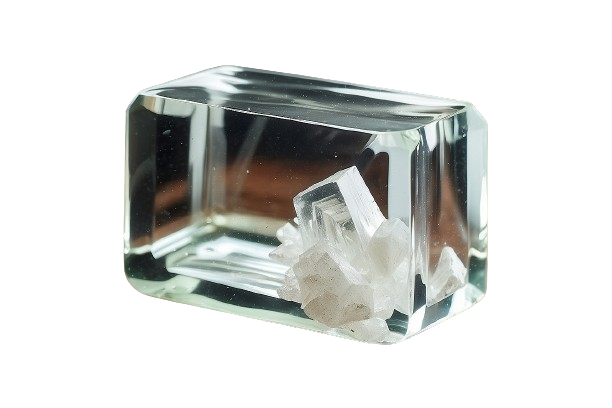
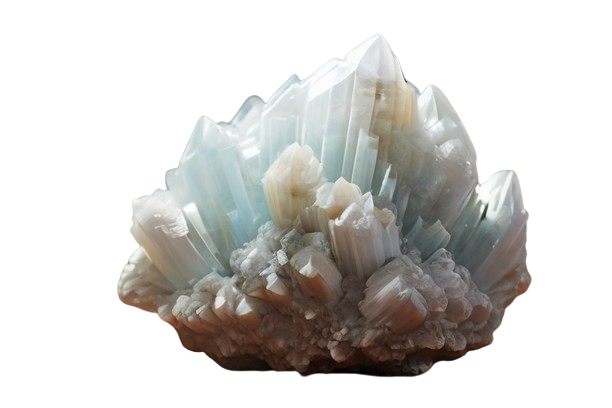



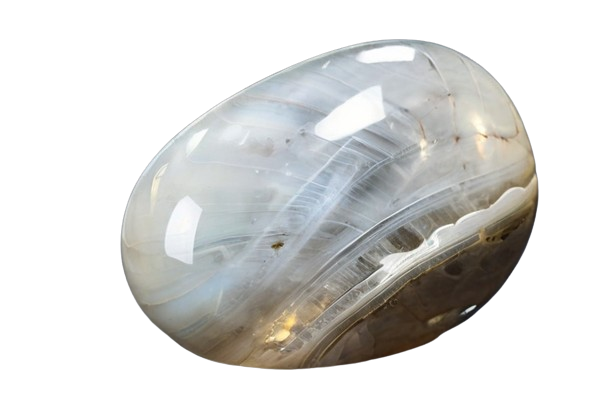
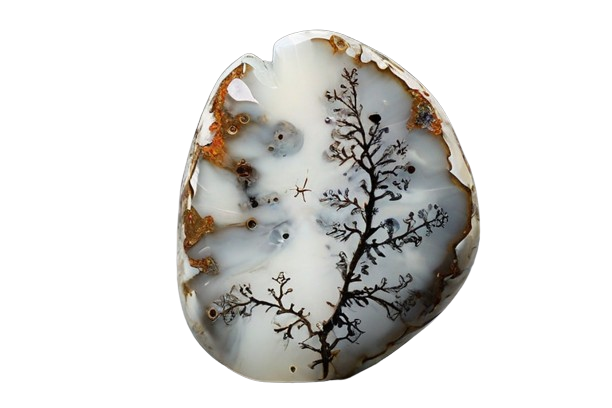

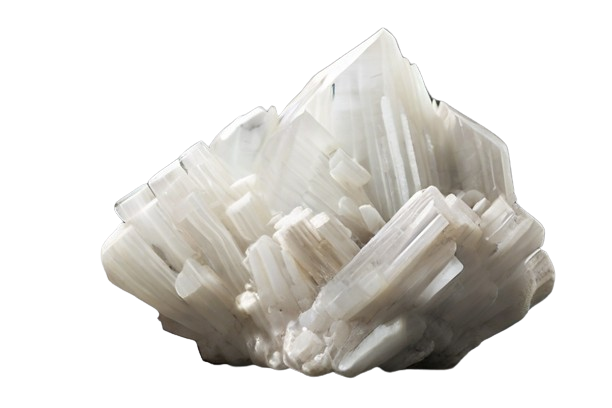

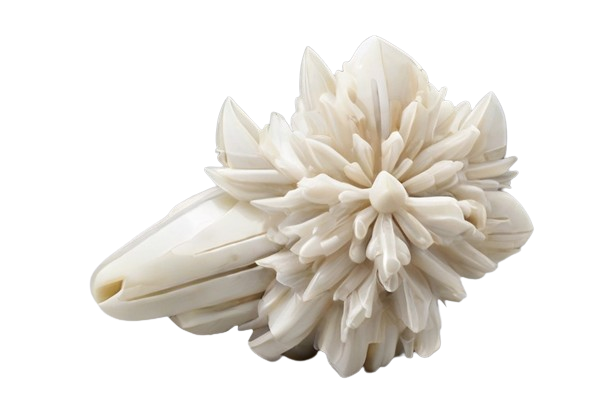
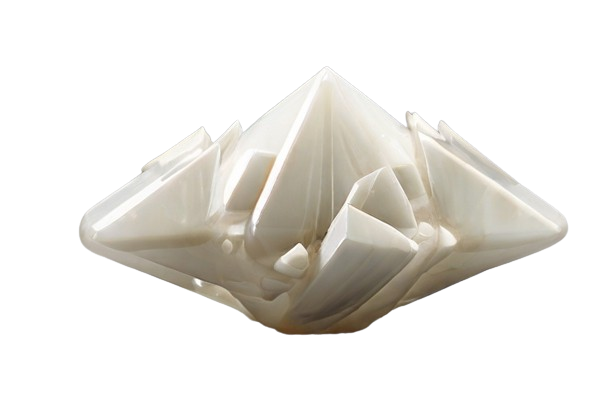
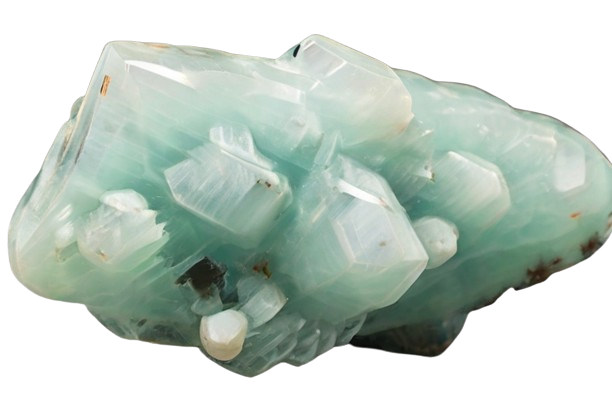
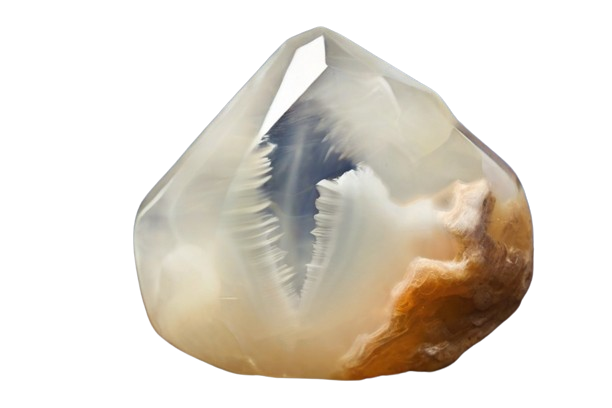
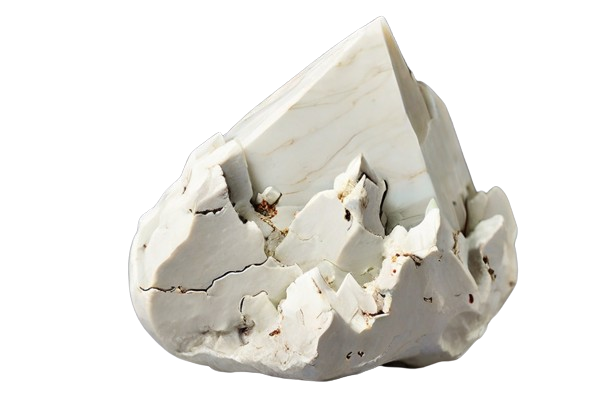
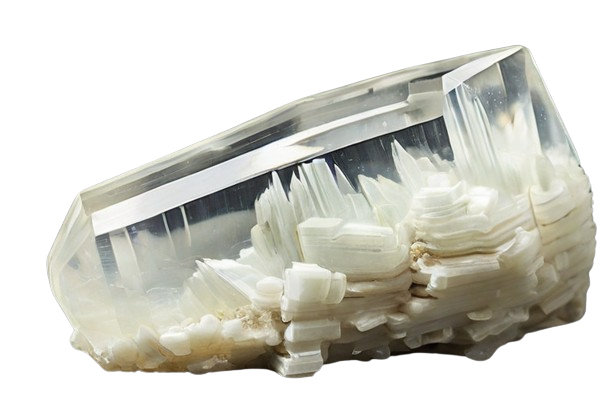
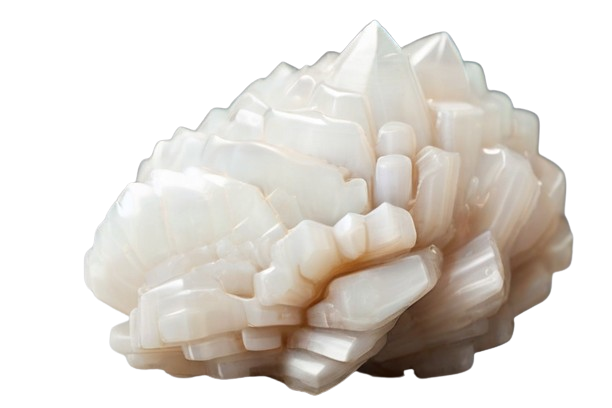
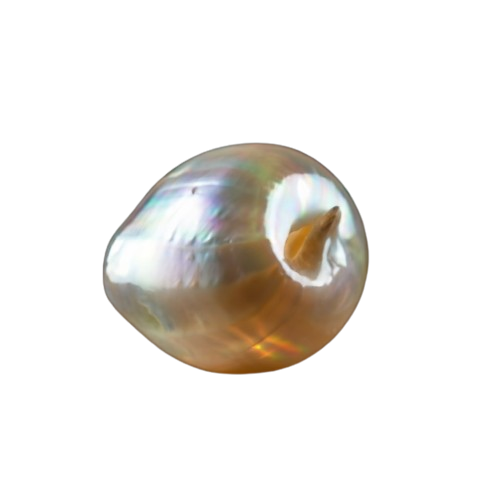

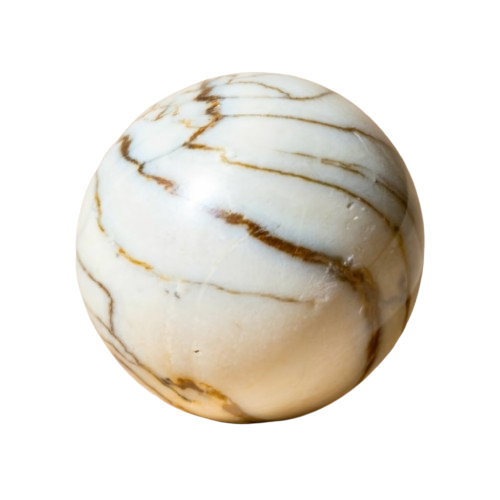
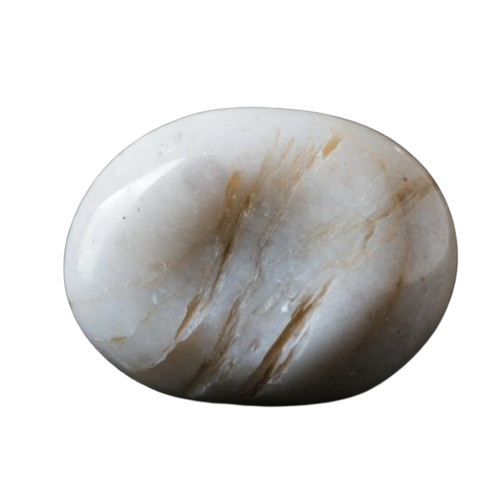


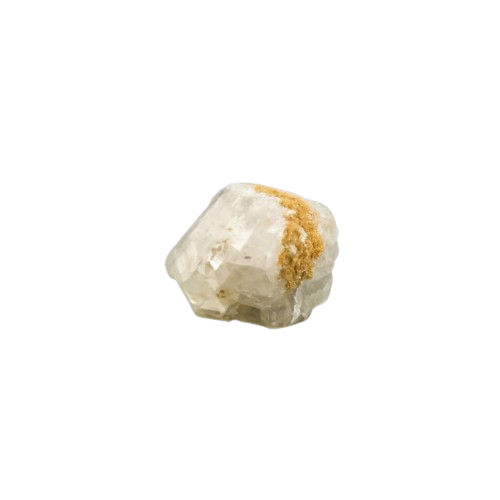




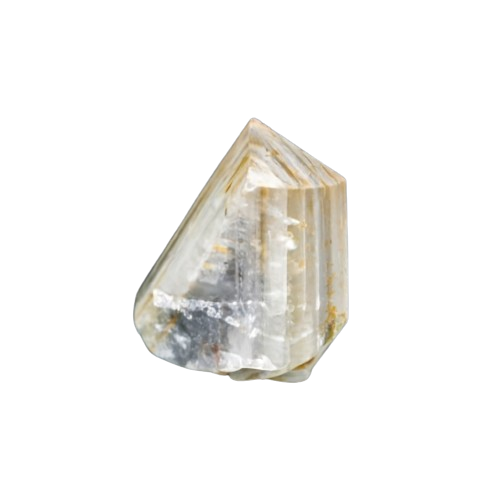
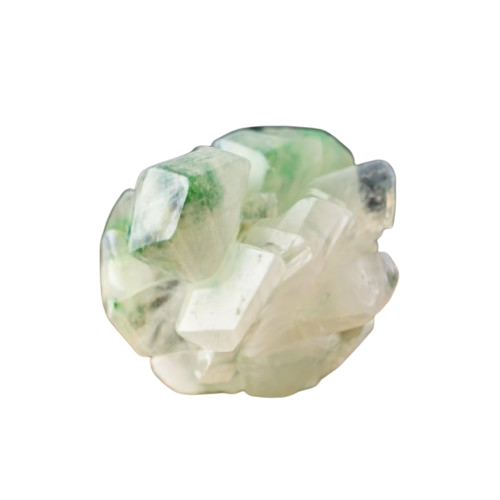
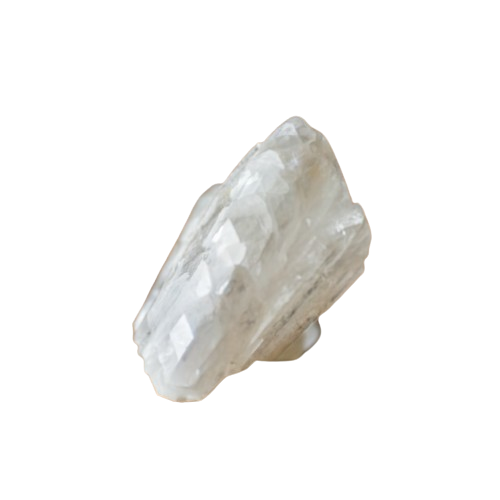
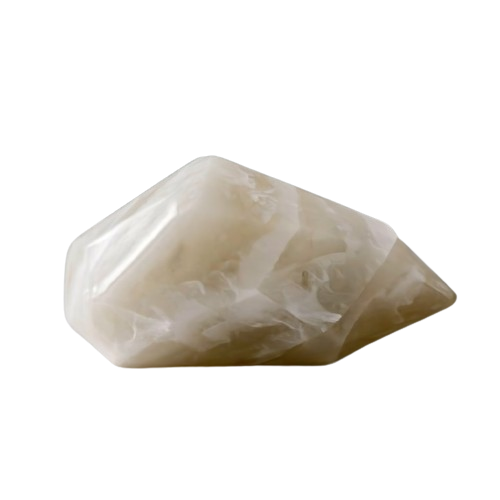
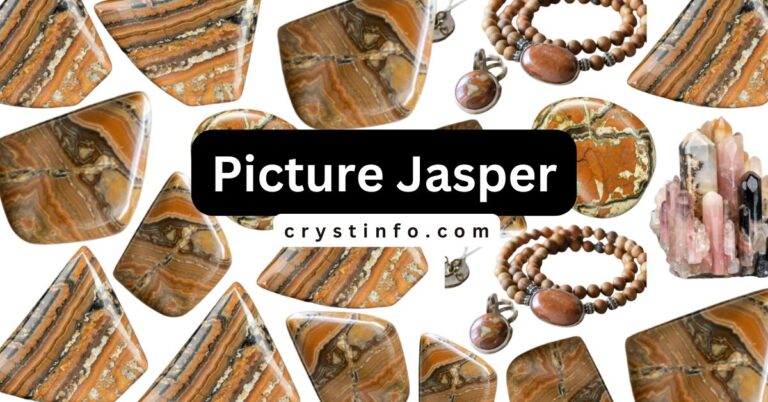
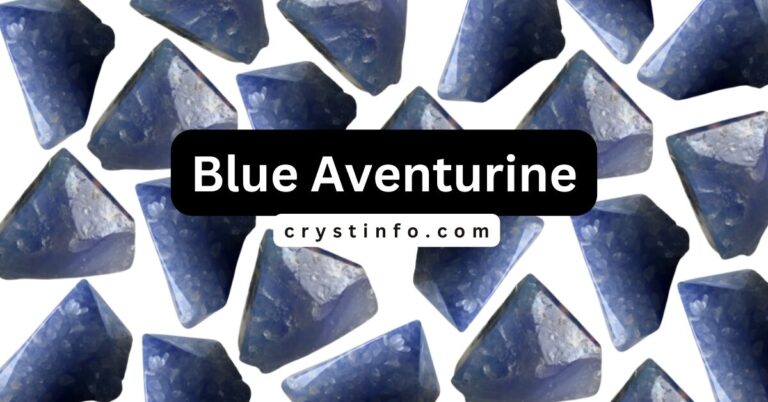
![Blue Calcite: Unveiling Healing Energies for Inner Peace [Guide]](https://crystinfoz.com/wp-content/uploads/2023/12/Add-a-heading-17-768x402.jpg)
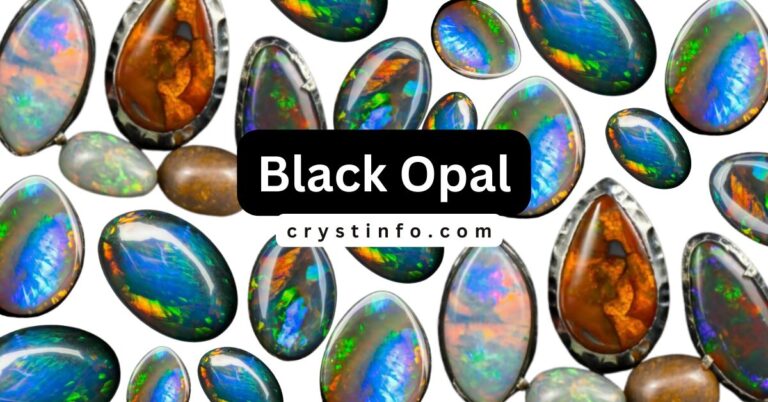
![Pink Crystal:Discover Healing Wonders,[45]Types and Benefits](https://crystinfoz.com/wp-content/uploads/2023/12/Add-a-heading-20-768x402.jpg)
